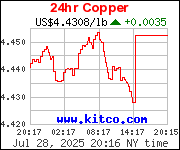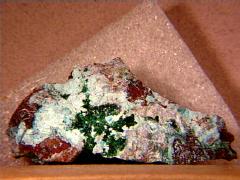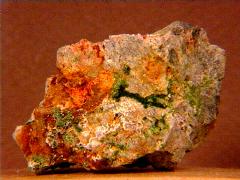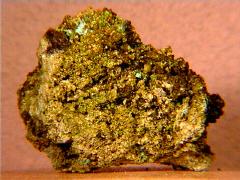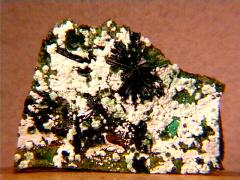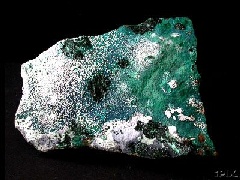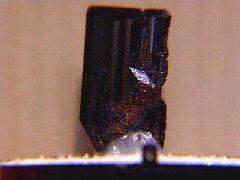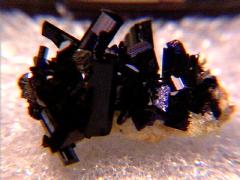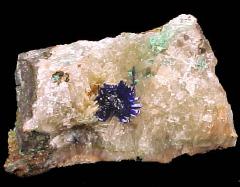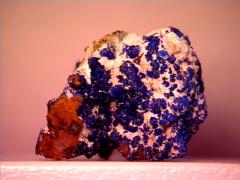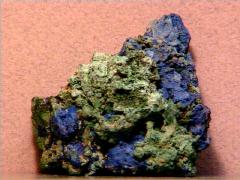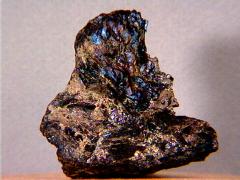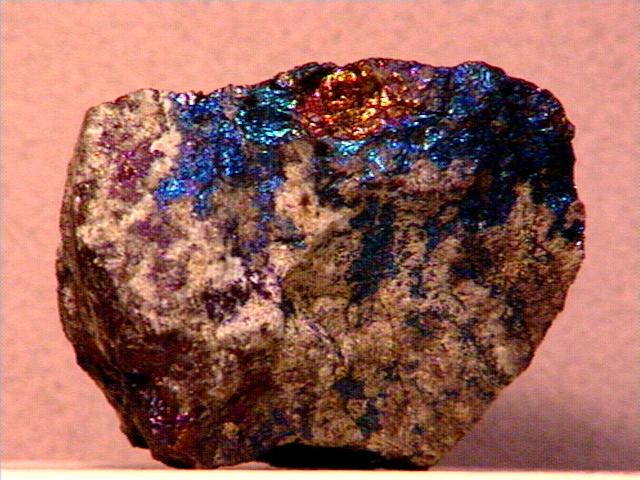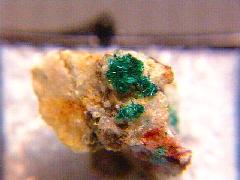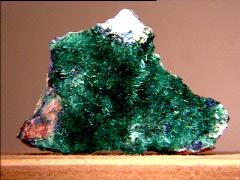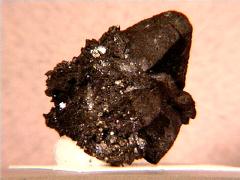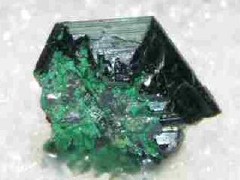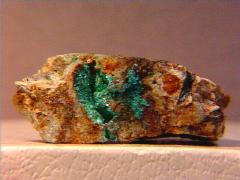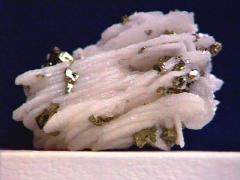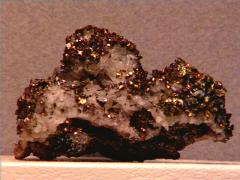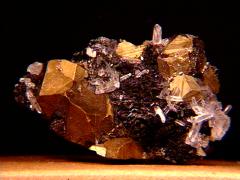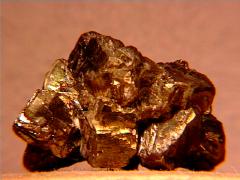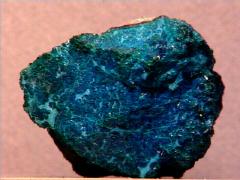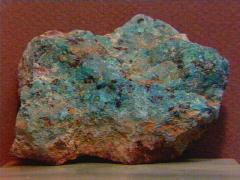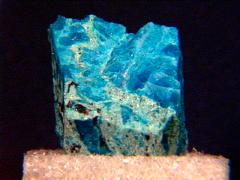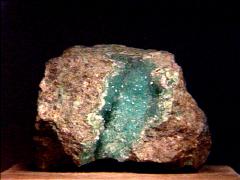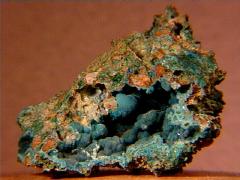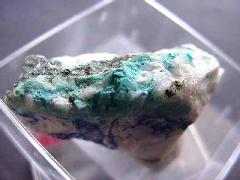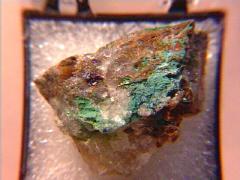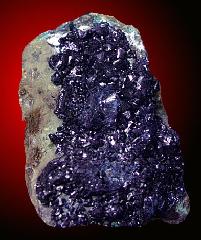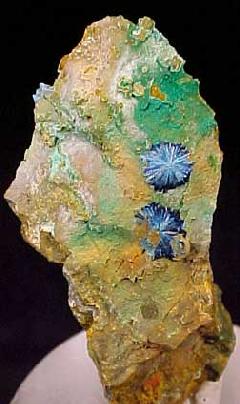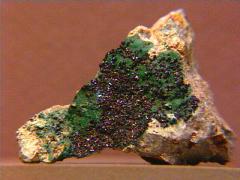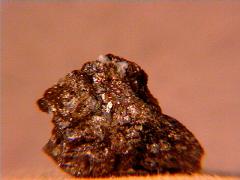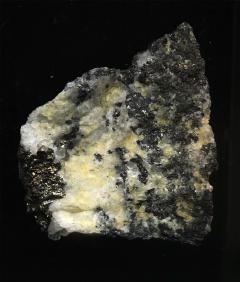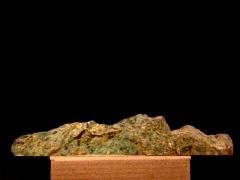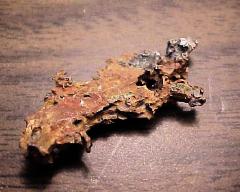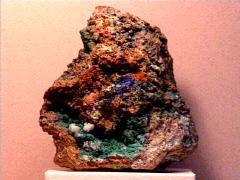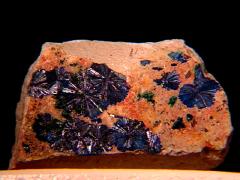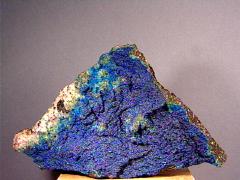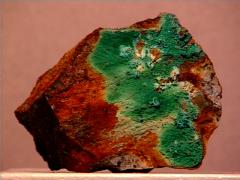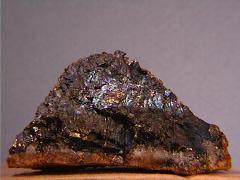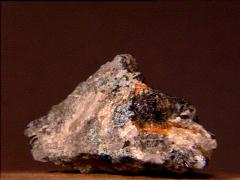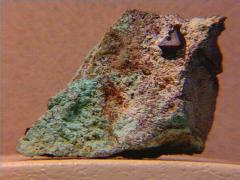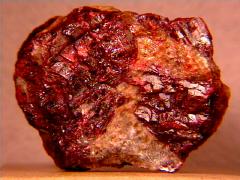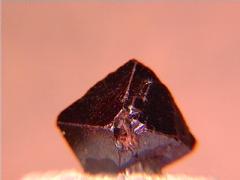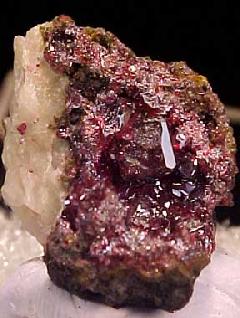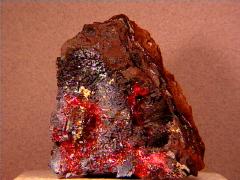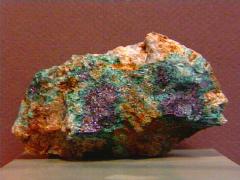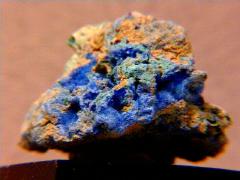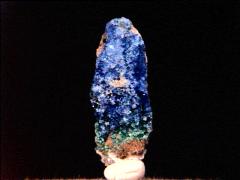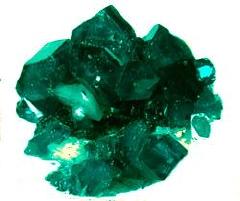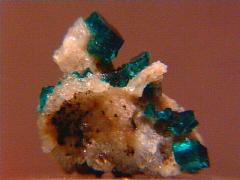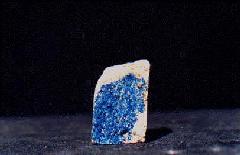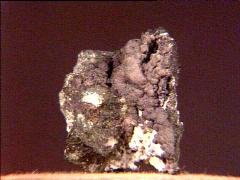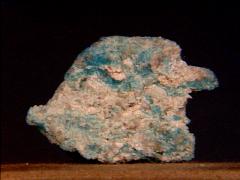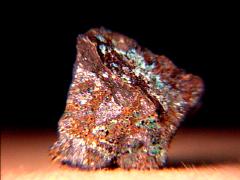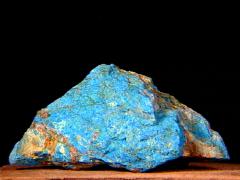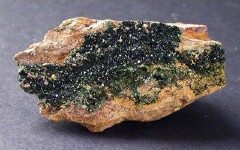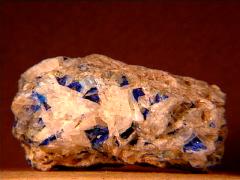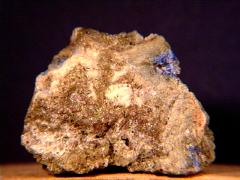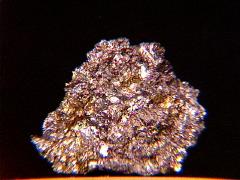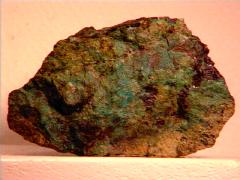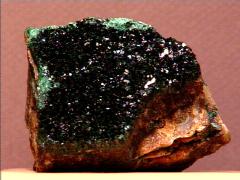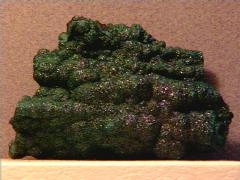I feel like I'm in the middle of an old fifties television sitcom. Desi Arnaz and Lucille Ball are playing their usual Cuban American bandleader and ditzy-wife roles. Desi is upset with something Lucy has done and comes home boiling mad, sputtering a string of invective in Spanish. After the laughter of the live studio audience dies down, he remarks "Looosie... you've got some 'splainin' to do!" Let's zip forward fifty-five years. I've got some explaining to do.
I've been a buyer on ebay since 2003. In that time I was a participant in several thousand transactions that went off, virtually, without a hitch. You can view my feedback rating and see, that at 1879 received it is one hundred percent positive. So when something does go wrong on ebay, I am disconcerted. Usually, it is just a package arriving late, but recently it was the wrong item. I had to exchange several emails and return the item. Let's say I was disgruntled.
The seller had sent my things to another buyer, and I had his item. After the other buyer had returned his item to the seller, and I returned mine, they were sent correctly to their respective bidders. A hassle that well might have been avoided if more care had been taken at the time of their original mailings. But mistakes can happen. Especially if you're elderly, new to ebay, and your short term memory is clouded by confusion. That's the essence of an email I received.
Another time I purchased an expensive Rado watch. I had just returned from a once-in-a-lifetime visit to Europe the previous summer. While there, I had spent a short while in the Inner Courtyard of the Doge's Palace http://www.italyguides.it/us/venice_italy/doge_s_palace/courtyard_doges_palace.htm
window-shopping in the many niches that are filled with vendors. I had spotted a black mirrored-finish watch I admired, but didn't want to pay the VAT. Sidenote to follow.
While there, Venice was encountering the worst stormfront in decades. We didn't get to go on a gondola ride. The Doge's Palace was closed to visitation due to pools of water beginning to puddle inside. And the courtyard? The one that was the scene, a few years ago, where a husband gives his wife a ring to commemorate their anniverary? And then she, with a flock of pigeons taking wing wistfully cries "I love you." That courtyard was awash in at least 8"of water.
Anyway, I returned from Italy with the memory of that watch egging me on. The little voice in my brain was insistent "I want it, I want it," and just would not be silenced. So when I saw that purportedly new $1500 watch on ebay with the bid currently at $600, I jumped in. I won it for something like $1050, but I was pleased by my bargain. Once I received it, though, my glee turned to dismay. The serial numbers had been buffed off. Not good. This posed a dilemma.
The watch had been stolen, it was obvious. Although with the serial number removed there was no way to prove it. The seller stated she got it back from the jeweler's that way after having it cleaned. Yeah, right. I tried to go into arbitration but the seller refused to cooperate. She didn't offer a refund, and I was afraid to ship it back. I would be totally empty-handed then. At least this way I had a watch with a colorful history. Ebay said there was nothing they could do, so I posted negative feedback and that was that.
While still in watch-collector mode I had another unfortunate episode. A seller in Australia listed an expensive watch that I was lucky enough to win at a significantly discounted price. After paying for it, for some reason I searched ebay. Maybe to compare prices with similar products to see how good a deal I had gotten? The same seller had the identical watch, with the same serial number, listed for sale again, with an auction expiration date of twenty-nine days!
I contacted other bidders whom I had bid against. Three of the seven confirmed that they had bid on a similar watch offered by the same seller in earlier listings. The guy was selling the same watch to bidder after bidder, and not delivering. What a scam. So I immediately began emailing, demanding a refund in full. No answer. I became threatening. No answer. I had several of the other people I had written to contact ebay, as did I. The guy got delisted.
Yet still no refund. I had to call the American Consulate in Sydney, Australia and send letters detailing what had happened to them and the police constabulatory in the town where he lived. After that, I did get a swift Paypal refund. Sometimes you have to turn up the heat to cook your goose. But likely, the guy just changed his identity on ebay and is still defrauding others. So I guess I could say,"I got mine Jack, but sorry Dude, you're on your own."
One final story as preamble. I once bought a Mexican 1.2057 ounce gold Centanario coin. Inspecting it while it was on ebay, I couldn't detect anything wrong. But once I got it into my covetous little mitts it was apparent it was a fake. The thing didn't even look like gold. It was the wrong color, too light, and it sounded different when dropped. The damned thing was brass. You think maybe I was pissed? You'd be right.
By this time I was getting good at squeezing juice out of the lemon, so I exerted pressure again. At first the seller didn't want to refund my money, but I threatened to contact the FBI, and their fraud division that deals with Internet Crime. I wasn't about to send the fake back to the seller until I got my money back. I emailed him and told him I wouldn't turn him in, and that he could sell the damned thing to some other idiot, I just wanted my money back. I got it.
So, this is the mindframe I was subconsciously nursing when my latest mishap befell me. As related in an earlier post which has been removed from this site, I received an empty box from a seller. It wasn't his fault, he had mailed the contents as promised, and the package was insured. The weight indicated on the sticker and his receipts show that he faithfully fulfilled any obligations as the seller. Yet, on the other hand, I hadn't received what I paid for.
In transit, the contents were lost. How did this happen? Who knows? Were they stolen by postal employees? His pending lawsuit may allege that. This seller, through no fault of his own, is out the price paid for the contents of that box. Because the USPS refuses to reimburse him more than $15 for contents that had a value of $363! He was gracious enough to cover the loss himself, and paid out-of-pocket a debt which rightfully belongs to the postal system.
Have you ever wanted to scream in frustration? Have you ever uttered words, in the heat of anger, that you later wished you could retract? This is an instance in which that occurred. By means of venting, I posted what I thought would remain personal, a diatribe on this site detailing what had transpired, and the coersive measures I was employing to get my money back. It would have been easy to imagine the worst, spurred to nightmares by my prior history.
I made the mistake of mentioning the seller's name in my rant. I did not intend to slander the individual, and was careful to mention only my displeasure with the system. But I did include contact information. Because I did so, even though I immediately modified the post when the seller refunded the money in full, a Google search engine was able to pull a cached version of the original post. My sentiments, which I thought I had posted in private, may have caused him public embarassment.
I never meant to impugn his reputation. But that's no excuse. If a speeding semi-truck overturns on a freeway, it's rear doors opening and spilling forth cartons of confetti which obscure the vision of motorists resulting in an accident, it doesn't matter if it was inadvertent or intentional. There are still casualties. So, Seller, you know who you are. Please accept this apology and feel free to offer this post in explanation if any doubt your sincerity. You are a man of honor and integrity, and in retrospect it has been a pleasure doing business with you.
Sunday, November 29, 2009
Saturday, November 28, 2009
Coppertunities
Today let's discuss copper opportunities, from the other side of the coin. In past weeks I've touted the advantage gained by those first to explore a new investment niche. Specifically copper. Copper pennies, to be even more precise. Those pennies minted prior to 1982 are comprised of virtually pure elemental copper, if you want to overlook the mere 5% zinc component. Start saving those pennies. You'll achieve an inexpensive means of accumulating a form of bullion. Copper is bullion?
For those new to the subject, copper can be viewed as bullion. It is money, and circulates in an easily obtainable, instantly recognizable form. The United States Mint has gone so far as to produce billions of them for our use. It's a no-brainer to buy silver and gold, in order to preserve your purchasing power. After all, gold has long been recognized as a safe haven in times of economic disruption. Hmmm, that would be now, right? Uncle Ben will ensure that commodities go up in price.
All that money that was conjured up. It's not just a bunch of computer ones and zeroes. It has real impact but, at the moment, little effect. But just wait until the banks stop sitting on it, using it as "worst-case scenario fallback reserves." Right now, it has zero velocity. But once it is placed back into use via loans, which at some point is a certainty, through the magic of fractional reserve banking that $700,000,000,000 TARP fund will add another zero behind it. All that money will need a destination, and precious metals and copper are on that itinerary.
Hyperinflation, here we come. You best be sitting on silver and gold if you want to have any purchasing power left. It wouldn't be a bad idea to include a pile of copper pennies and a stack of nickels as well. All commodities will do well in a hyperinflationary event, but why overlook the forms of bullion that the Mint has already gift-wrapped for us, made especially for this purpose? When currency fails, only trusted and recognizable forms of barter will be accepted. In my book, that's copper and nickel. But, as should be obvious to the keen observer, I am a Copper Bug.
Perhaps I am overly biased in favor of this form of bullion? Well then, what do others say? The Copper Kangaroo http://www.copperkangaroo.com/invest.html has this to say, in part: "Bullion is a monetary metal... used to make coins and ingots for monetary or investment purposes. Gold, silver and copper are the three most common forms... Gold and silver have been hoarded as a way of preserving wealth, copper ... less. This is rapidly starting to change and there are now forum sites dedicated to hoarding copper, mostly in... cents."
The Portland Mint http://portlandmint.com/, a copper-cents-are-bullion site says: "a copper penny is worth considerably more than its face value. Because pennies are made by the U.S. mint, they are guaranteed to have the utmost quality and purity. This also makes them easily recognizable, which increases their demand and liquidity. Copper pennies are an inexpensive and safe method of copper investment. A single coin will never be worth less than face value, thus giving it a limited downside. Global demand for copper continues to rise..."
From thepennysorter http://cgi.ebay.com/10-Pounds-Copper-Bullion-Pennies-1959-1982_W0QQitemZ270492689935QQcmdZViewItemQQptZCoins_Bullion?hash=item3efa9ee60f this: "Copper’s healthy maintenance of markets and its promise to gain new ones, such as superconductivity applications, new marine uses such as ship hulls and sheathing of offshore platforms, electric vehicles, earth-coupled heat pumps, solar energy , fire sprinkler systems, and nuclear waste disposal canisters, to name a few, must be balanced against its prospects of future availability."
From PennyBullion http://cgi.ebay.com/2000-lbs-1Ton-U-S-95-Copper-Pennies-1959-1982_W0QQitemZ250407283091QQcmdZViewItemQQptZCoins_US_Individual?hash=item3a4d6fe993 this: "If Foreign Nations, including our biggest creditors, no longer want the Billions of paper Dollars that they hold, why would you want the Hundreds or Thousands that you own? Move into money that is backed by something that has held value for thousands of years; Protect Your Wealth with the most affordable "Precious" Metal, Copper Coins!"
From analyst Sol Palha http://news.goldseek.com/TacticalInvestor/1239107520.php this: "Taking a long term perspective copper is still a bargain; a day will come when its current all time high will look cheap, so one can imagine how the majority will feel in the years to come when instead of buying aggressively, they sat moping around waiting for the experts to guide them."
From GoldWhy.com http://www.goldwhy.com/why-buy-25-dollar-boxes-of-copper-pennies.html this: "Copper is on the rise and you should definitely consider placing part of your metals portfolio in copper bullion." "...you get an instant 100 plus percent gain by holding copper pennies for their raw metal value." "There are very few investments out there that guarantee an instant 100 percent appreciation with no risk." "...you should hoard all of your pre-1982 pennies." "...it may make sense to buy some copper pennies..."
From GoldWorld.com http://www.goldworld.com/articles/pinching-your-pennies/1 this: "... spot price of copper... record high on May 4, 2006 at about $3.50 a pound." " ...many analysts see copper... going much higher." "...with China and India going through their own industrial revolution, copper will see major pressure on the demand side..." "This gives copper a bullish platform." "...pre-1982 pennies could be traded for their intrinsic value, similar to old U.S. silver coins that trade back and forth for their silver content rather than their stated value."
And finally, from an article entitled Will Copper Outshine Silver and Gold?http://www.telegraph.co.uk/finance/personalfinance/investing/gold/5165209/Will-copper-outshine-gold-and-silver.html this: "BlackRock World Mining investment trust... remain overweight copper, which has some of the best fundamentals." "Metal commodities have become a staple part of many portfolios, as investors look for diversification and assets that are not correlated to the performance of shares."
I bring this to your attention to emphasize a point. Two copper opportunities are in this nest. The fledglings are spreading their wings and would like to fly, but they could use an assist. Copper, in this early stage, affords a chance to capitalize for both buyers and sellers. I've presented the case for buyers who wish to take a position in copper bullion. There are millions of these investors, and they will one day come to their senses.
But how many coin dealers and bullion vendors are there online? Hundreds? Thousands? I suspect it's a fairly large number. Do you offer copper cents in bulk? Why not? You don't even have to stock them, you need only advertise their availability. Why don't you contact one of the hundreds of members of realcent.forumco.com who have already saved you the time and expense of accumulating them? You can purchase directly from them and dropship. I'm sure, for the right price, they'd be willing to accomodate you.
If this were the sixties, we might be watching Bonanza as Hop Sing steps forth onto the front porch, grabs his wrought iron wand and vigorously bangs the dinner triangle as he hollers "Copper bullion, come and get it!" Copper is sizzling hot right now. Make sure you get your plateful, in fact why not two? The chef just placed this on the menu, and already it's becoming a crowd favorite. It's just starting to take off, and there's no telling how well it could do. Don't leave hungry.
Buy Silver. Buy Gold. Save Copper. Start Now.
For those new to the subject, copper can be viewed as bullion. It is money, and circulates in an easily obtainable, instantly recognizable form. The United States Mint has gone so far as to produce billions of them for our use. It's a no-brainer to buy silver and gold, in order to preserve your purchasing power. After all, gold has long been recognized as a safe haven in times of economic disruption. Hmmm, that would be now, right? Uncle Ben will ensure that commodities go up in price.
All that money that was conjured up. It's not just a bunch of computer ones and zeroes. It has real impact but, at the moment, little effect. But just wait until the banks stop sitting on it, using it as "worst-case scenario fallback reserves." Right now, it has zero velocity. But once it is placed back into use via loans, which at some point is a certainty, through the magic of fractional reserve banking that $700,000,000,000 TARP fund will add another zero behind it. All that money will need a destination, and precious metals and copper are on that itinerary.
Hyperinflation, here we come. You best be sitting on silver and gold if you want to have any purchasing power left. It wouldn't be a bad idea to include a pile of copper pennies and a stack of nickels as well. All commodities will do well in a hyperinflationary event, but why overlook the forms of bullion that the Mint has already gift-wrapped for us, made especially for this purpose? When currency fails, only trusted and recognizable forms of barter will be accepted. In my book, that's copper and nickel. But, as should be obvious to the keen observer, I am a Copper Bug.
Perhaps I am overly biased in favor of this form of bullion? Well then, what do others say? The Copper Kangaroo http://www.copperkangaroo.com/invest.html has this to say, in part: "Bullion is a monetary metal... used to make coins and ingots for monetary or investment purposes. Gold, silver and copper are the three most common forms... Gold and silver have been hoarded as a way of preserving wealth, copper ... less. This is rapidly starting to change and there are now forum sites dedicated to hoarding copper, mostly in... cents."
The Portland Mint http://portlandmint.com/, a copper-cents-are-bullion site says: "a copper penny is worth considerably more than its face value. Because pennies are made by the U.S. mint, they are guaranteed to have the utmost quality and purity. This also makes them easily recognizable, which increases their demand and liquidity. Copper pennies are an inexpensive and safe method of copper investment. A single coin will never be worth less than face value, thus giving it a limited downside. Global demand for copper continues to rise..."
From thepennysorter http://cgi.ebay.com/10-Pounds-Copper-Bullion-Pennies-1959-1982_W0QQitemZ270492689935QQcmdZViewItemQQptZCoins_Bullion?hash=item3efa9ee60f this: "Copper’s healthy maintenance of markets and its promise to gain new ones, such as superconductivity applications, new marine uses such as ship hulls and sheathing of offshore platforms, electric vehicles, earth-coupled heat pumps, solar energy , fire sprinkler systems, and nuclear waste disposal canisters, to name a few, must be balanced against its prospects of future availability."
From PennyBullion http://cgi.ebay.com/2000-lbs-1Ton-U-S-95-Copper-Pennies-1959-1982_W0QQitemZ250407283091QQcmdZViewItemQQptZCoins_US_Individual?hash=item3a4d6fe993 this: "If Foreign Nations, including our biggest creditors, no longer want the Billions of paper Dollars that they hold, why would you want the Hundreds or Thousands that you own? Move into money that is backed by something that has held value for thousands of years; Protect Your Wealth with the most affordable "Precious" Metal, Copper Coins!"
From analyst Sol Palha http://news.goldseek.com/TacticalInvestor/1239107520.php this: "Taking a long term perspective copper is still a bargain; a day will come when its current all time high will look cheap, so one can imagine how the majority will feel in the years to come when instead of buying aggressively, they sat moping around waiting for the experts to guide them."
From GoldWhy.com http://www.goldwhy.com/why-buy-25-dollar-boxes-of-copper-pennies.html this: "Copper is on the rise and you should definitely consider placing part of your metals portfolio in copper bullion." "...you get an instant 100 plus percent gain by holding copper pennies for their raw metal value." "There are very few investments out there that guarantee an instant 100 percent appreciation with no risk." "...you should hoard all of your pre-1982 pennies." "...it may make sense to buy some copper pennies..."
From GoldWorld.com http://www.goldworld.com/articles/pinching-your-pennies/1 this: "... spot price of copper... record high on May 4, 2006 at about $3.50 a pound." " ...many analysts see copper... going much higher." "...with China and India going through their own industrial revolution, copper will see major pressure on the demand side..." "This gives copper a bullish platform." "...pre-1982 pennies could be traded for their intrinsic value, similar to old U.S. silver coins that trade back and forth for their silver content rather than their stated value."
And finally, from an article entitled Will Copper Outshine Silver and Gold?http://www.telegraph.co.uk/finance/personalfinance/investing/gold/5165209/Will-copper-outshine-gold-and-silver.html this: "BlackRock World Mining investment trust... remain overweight copper, which has some of the best fundamentals." "Metal commodities have become a staple part of many portfolios, as investors look for diversification and assets that are not correlated to the performance of shares."
I bring this to your attention to emphasize a point. Two copper opportunities are in this nest. The fledglings are spreading their wings and would like to fly, but they could use an assist. Copper, in this early stage, affords a chance to capitalize for both buyers and sellers. I've presented the case for buyers who wish to take a position in copper bullion. There are millions of these investors, and they will one day come to their senses.
But how many coin dealers and bullion vendors are there online? Hundreds? Thousands? I suspect it's a fairly large number. Do you offer copper cents in bulk? Why not? You don't even have to stock them, you need only advertise their availability. Why don't you contact one of the hundreds of members of realcent.forumco.com who have already saved you the time and expense of accumulating them? You can purchase directly from them and dropship. I'm sure, for the right price, they'd be willing to accomodate you.
If this were the sixties, we might be watching Bonanza as Hop Sing steps forth onto the front porch, grabs his wrought iron wand and vigorously bangs the dinner triangle as he hollers "Copper bullion, come and get it!" Copper is sizzling hot right now. Make sure you get your plateful, in fact why not two? The chef just placed this on the menu, and already it's becoming a crowd favorite. It's just starting to take off, and there's no telling how well it could do. Don't leave hungry.
Buy Silver. Buy Gold. Save Copper. Start Now.
Friday, November 27, 2009
Broken Words, Empty Promises
We are all taught to be careful when bidding on items listed on ebay. Site guidelines caution you to review a seller's feedback ratings and to consider bidding only on those auctions which are offered by seller's who have a sterling reputation. Ebay can be a means for deceitful individuals to defraud innocent buyers, whether through malice with intent, or as a result of an accident. Thus exists the maxim caveat emptor, 'let the buyer beware.'
Ebay employs a feedback system as a means of attempting to ensure that transactions betwixt buyers and sellers proceed smoothly. Apparently, the fee structure attached to listings is more costly as one's ratings deteriorate, so an incentive to provide good "customer service" is there to motivate the seller. It is the obligation of the buyer to inspect the property received and post a fair and accurate assessment of their satisfaction with the transaction.
This process, for the most part, functions well and promotes a friendly, mercantile environment well-suited to the small entrepreneur for marketing their goods and obtaining the best possible sales price. Ebay exists at the pinnacle of exchange, it is America's garage sale, open not just on weekends, but 24/7. If you want to find just about anything, all you need do is type your request in the search field and "voila," you have instant access to all types of things you never knew you desired.
Ebay is promoted as a safe environment to conduct transactions, offering a vast array of goods obtainable at prices determined only by interested bidders. At times, items with few bidders can prove to be a bargain for the highest bidder, eliciting a gasp of delight as they gloat "Ha! I won it for that much?" At other times ego intrudes, emotions run high, and two or more bidders will bid items to lofty, unwarranted heights that can only result in wallet surgery.
But what happens when things go awry? Well, then there's always SquareTrade, an arbitration protocol for mediating disputes between parties and, as well, there's buyer protection offered through Paypal, the now-mandatory payment system. Even then, things can go wrong. I know, it happened to me.
I received a box from a seller that I noticed - while still at the post office - was suspiciously light. But I didn't inspect it closely as it was only one package amidst a dozen. I got home to discover later that the box was empty, re-bound with clear adhesive tape from the post office and a red message stamped on the exterior stating that it had been received in empty condition and been resealed.
There was no packing slip and no return address, so although the package was mailed from Coulton, Florida, I couldn't immediately determine what the contents had been. I had ordered perhaps three to four hundred packages in this time frame, so I was forced to laboriously inventory all of them before I could ascertain that the missing item was five bids of rolls of silver coins purchased from Coinsatheart on July 28, 2009. I had paid $297 for a cardboard box!
By now, maybe forty days had passed, and according to ebay rules you must post feedback within sixty days. When I would look down the column of items that I had not yet left feedback for, there those five items were, with a small note highlighted beneath warning not to miss the deadline to submit the case for arbitration if a problem existed.
There was no problem, yet, at least not as far as I was concerned. The box had been insured, so we merely had to file a claim with the USPS and all would be fine. So, after several emails with Hollis, the seller, the sixty-day period was drawing to a close. I called ebay and explained that I didn't want to post negative feedback on this seller, because to my knowledge he was acting with good intent in having filed the insurance claim; I was just awaiting a refund.
It was at this point I noticed the first waft of stench from the sewage factory had despoiled the beautiful Fall weather. Ebay informed me that I couldn't open up a case because it was too late. I asked them about Paypal's buyer protection plan and they stated you had to file within 45 days. "But what about the feedback deadline," I retorted, "why would you allow 60 days for one system but limit complaints to only 45 days with the other?"
"That's just the way it is," stated the voice on the phone, "it changed about two months ago." But you didn't notify ebay users of the change before it happened," I exclaimed, " how are we supposed to know there are time limits to filing a claim for arbitration?" The voice on the phone stated "we have no obligation to inform users, you need to read the terms of agreement, it's all covered in there."
So here's the situation as it now stands. Two days prior to the expiration of the sixty day period, Hollis had sent me an email stating that the insurance had been refused, and that he was so frustrated that he would just deal with the post office himself and promised to Paypal me the refund himself. I never heard from him again.
Two weeks later I sent him a scathing letter, not directly accusing him of cheating me but implying that I was prepared to "take all steps necessary to secure my refund." He finally replied with an abject tale of having lost his job, and that if he could just have a few more days he would Paypal me. Another two weeks, another excuse, and this time I really haven't heard back from him again.
"Well," you might be thinking, "tough break, you learned an expensive lesson." But I'm not going to let this drop so easily. There are a few things left that I can do, even though Hollis is in Coulton, Florida and I'm clear over here in Central California. He probably thinks he is free and clear, and why should he reimburse me when there's nothing I can do? This situation might seem absurd but, potentially, it could happen to you. So here's the steps I've taken and those I will initiate soon.
I filed a report with the Internet Fraud Division of the Federal Bureau of Investigation. Their site states they will forward the information gathered to the appropriate authorities for eventual prosecution. They needed to know Hollis's last name, for the forms I filled out, but I shall not reveal it here; I have to be careful here to avoid defamatory remarks but everything I've stated is true, I have copies of all his email remarks so I should be safe in that regard.
Next week I will be contacting the police department in his community and filing a loss report, and question them whether his actions constitute fraud. I also plan on contacting the Postmaster General of the USPS in that region to determine if a claim was ever actually filed. I plan on writing a well-detailed report and submitting it to both Paypal and ebay to inform them of events as they transpire.
I've even considered speaking with a representative of the news media, or contacting CNNFN.com and submitting a human interest story with an angle of "man sells prized possessions to put food on table, USPS reneges on promise." I mean, what a racket! All these years people have been buying insurance on the items they insure, only to be told by the post office if they make a claim "you're limited to fifteen dollars on that claim."
They say that every once in awhile, you just need to "reach out and touch someone." So, Hollis, consider this a not-so-gentle nudge in the ribs... I want my money back! To be fair, there's two sides to every story, so if you'd care to hear his you could contact him, but again, to provide contact information would be a breach of trust, and in a moment I'll explain why I don't feel comfortable doing that. But I am running this post because I wouldn't want to see another victimized. The present system has faults, your packages are not insured.
Postscript: It took another long month, and the exchange of, at times, acerbic emails, but I was eventually compensated in full. This text has been altered, "to protect the innocent." Hollis is a fictitious name, as are all other forms of identity which allude to the seller.
Ebay employs a feedback system as a means of attempting to ensure that transactions betwixt buyers and sellers proceed smoothly. Apparently, the fee structure attached to listings is more costly as one's ratings deteriorate, so an incentive to provide good "customer service" is there to motivate the seller. It is the obligation of the buyer to inspect the property received and post a fair and accurate assessment of their satisfaction with the transaction.
This process, for the most part, functions well and promotes a friendly, mercantile environment well-suited to the small entrepreneur for marketing their goods and obtaining the best possible sales price. Ebay exists at the pinnacle of exchange, it is America's garage sale, open not just on weekends, but 24/7. If you want to find just about anything, all you need do is type your request in the search field and "voila," you have instant access to all types of things you never knew you desired.
Ebay is promoted as a safe environment to conduct transactions, offering a vast array of goods obtainable at prices determined only by interested bidders. At times, items with few bidders can prove to be a bargain for the highest bidder, eliciting a gasp of delight as they gloat "Ha! I won it for that much?" At other times ego intrudes, emotions run high, and two or more bidders will bid items to lofty, unwarranted heights that can only result in wallet surgery.
But what happens when things go awry? Well, then there's always SquareTrade, an arbitration protocol for mediating disputes between parties and, as well, there's buyer protection offered through Paypal, the now-mandatory payment system. Even then, things can go wrong. I know, it happened to me.
I received a box from a seller that I noticed - while still at the post office - was suspiciously light. But I didn't inspect it closely as it was only one package amidst a dozen. I got home to discover later that the box was empty, re-bound with clear adhesive tape from the post office and a red message stamped on the exterior stating that it had been received in empty condition and been resealed.
There was no packing slip and no return address, so although the package was mailed from Coulton, Florida, I couldn't immediately determine what the contents had been. I had ordered perhaps three to four hundred packages in this time frame, so I was forced to laboriously inventory all of them before I could ascertain that the missing item was five bids of rolls of silver coins purchased from Coinsatheart on July 28, 2009. I had paid $297 for a cardboard box!
By now, maybe forty days had passed, and according to ebay rules you must post feedback within sixty days. When I would look down the column of items that I had not yet left feedback for, there those five items were, with a small note highlighted beneath warning not to miss the deadline to submit the case for arbitration if a problem existed.
There was no problem, yet, at least not as far as I was concerned. The box had been insured, so we merely had to file a claim with the USPS and all would be fine. So, after several emails with Hollis, the seller, the sixty-day period was drawing to a close. I called ebay and explained that I didn't want to post negative feedback on this seller, because to my knowledge he was acting with good intent in having filed the insurance claim; I was just awaiting a refund.
It was at this point I noticed the first waft of stench from the sewage factory had despoiled the beautiful Fall weather. Ebay informed me that I couldn't open up a case because it was too late. I asked them about Paypal's buyer protection plan and they stated you had to file within 45 days. "But what about the feedback deadline," I retorted, "why would you allow 60 days for one system but limit complaints to only 45 days with the other?"
"That's just the way it is," stated the voice on the phone, "it changed about two months ago." But you didn't notify ebay users of the change before it happened," I exclaimed, " how are we supposed to know there are time limits to filing a claim for arbitration?" The voice on the phone stated "we have no obligation to inform users, you need to read the terms of agreement, it's all covered in there."
So here's the situation as it now stands. Two days prior to the expiration of the sixty day period, Hollis had sent me an email stating that the insurance had been refused, and that he was so frustrated that he would just deal with the post office himself and promised to Paypal me the refund himself. I never heard from him again.
Two weeks later I sent him a scathing letter, not directly accusing him of cheating me but implying that I was prepared to "take all steps necessary to secure my refund." He finally replied with an abject tale of having lost his job, and that if he could just have a few more days he would Paypal me. Another two weeks, another excuse, and this time I really haven't heard back from him again.
"Well," you might be thinking, "tough break, you learned an expensive lesson." But I'm not going to let this drop so easily. There are a few things left that I can do, even though Hollis is in Coulton, Florida and I'm clear over here in Central California. He probably thinks he is free and clear, and why should he reimburse me when there's nothing I can do? This situation might seem absurd but, potentially, it could happen to you. So here's the steps I've taken and those I will initiate soon.
I filed a report with the Internet Fraud Division of the Federal Bureau of Investigation. Their site states they will forward the information gathered to the appropriate authorities for eventual prosecution. They needed to know Hollis's last name, for the forms I filled out, but I shall not reveal it here; I have to be careful here to avoid defamatory remarks but everything I've stated is true, I have copies of all his email remarks so I should be safe in that regard.
Next week I will be contacting the police department in his community and filing a loss report, and question them whether his actions constitute fraud. I also plan on contacting the Postmaster General of the USPS in that region to determine if a claim was ever actually filed. I plan on writing a well-detailed report and submitting it to both Paypal and ebay to inform them of events as they transpire.
I've even considered speaking with a representative of the news media, or contacting CNNFN.com and submitting a human interest story with an angle of "man sells prized possessions to put food on table, USPS reneges on promise." I mean, what a racket! All these years people have been buying insurance on the items they insure, only to be told by the post office if they make a claim "you're limited to fifteen dollars on that claim."
They say that every once in awhile, you just need to "reach out and touch someone." So, Hollis, consider this a not-so-gentle nudge in the ribs... I want my money back! To be fair, there's two sides to every story, so if you'd care to hear his you could contact him, but again, to provide contact information would be a breach of trust, and in a moment I'll explain why I don't feel comfortable doing that. But I am running this post because I wouldn't want to see another victimized. The present system has faults, your packages are not insured.
Postscript: It took another long month, and the exchange of, at times, acerbic emails, but I was eventually compensated in full. This text has been altered, "to protect the innocent." Hollis is a fictitious name, as are all other forms of identity which allude to the seller.
Thursday, November 26, 2009
I Need A Good Barber
This past week was a rough one for investors long silver and gold. Silver in particular underwent a severe pullback from recent highs above $19, falling through support levels to its current range of $15 plus or minus a quarter. If you're like me - in it for the long haul - and don't employ stop-loss strategies, the recent plunge been a time of soul-searching and gut-wrenching turmoil. So what's causing the correction? The fundamentals haven't changed. Manipulation by the shorts? Check out what Ted Butler has to say, and listen to the man. He knows what he's talking about.
If this is a case of the bullion banks, led by the usual cast of shady characters like JPMorgan, shorting the market massively again then, at some point, they'll have to fill their shorts and that should bouy the market back to its previous levels. Silver will recover, in time, to surpass its earlier highs. Of that I'm confident. But will it wallow in the short term? Possibly drifting even lower? It could, according to J.Derek Blain, who feels that silver is currently overvalued. http://www.kitco.com/ind/Blain/jan132010.html
I happen to disagree with him, but my rationale is tainted by my long positions in bullion and mining equities. I want silver to outperform, so my perceptions are colored by my bias, shoring up my own rationale. Although I feel that hyperinflation is imminent, and that silver will surge farther and faster than gold, a more cautious investor might prefer to sit in cash and wait to see if we might first enter a depressionary phase, with concomitant cheaper entry points in to precious metals. Robert Prechter is a leading proponent espousing this viewpoint.
Nearly anything can happen in the short term. Technical analysis can be misconstrued and that distortion misinterpreted to buttress arguments that are polar opposites. In the long run, our nations debt binge ensures that hyperinflation will eventuate, but that could be a few years off. I believe that precious metals will ultimately be the place to be to survive and thrive under that scenario, but in the interim anything could happen. The bull will try its best to buck market-timing opportunists.
Since predicting the direction of the markets at this point seems to be nothing more than crystal ball gazing, I'm going to depart a bit from my usual rants. About the merits of investing in copper bullion. That by accumulating copper pennies minted before 1982, one can begin to take a small position in copper bullion. Copper is quite likely to gradually appreciate in value, even in the absence of inflation. Most heads are turned by silver and gold, but someday tongues will wag about what copper has done. Nor am I going to go off on one of my raves.
About how the economy is sliding into an abyss, like how California slides into the Pacific Ocean in 2012. The movie, that is. I'm not quite sure that will literally be their fate. But figuratively speaking, if Arnold doesn't hurry up and do something quick, he'll be remembered for something else than his memorable line in Terminator. If things don't improve soon, Governor Schwartzennegger's "I'll be bach," will refer to his futile begging - for bailout funds for the state - at the steps of the Capitol.
No, today I'm going to use our time to share what can happen if you're not careful. If, despite your best intentions to purchase bullion for its content and its recognized role in wealth preservation, you become seduced by its secondary nature. The real purpose of buying silver and gold, and taking physical possession of it, is not to admire those baubles. It is to maintain your purchasing power. And silver and gold's track record indicates its excellence at that task. They have increased far more in worth, since this century began, than the toll inflicted by inflation.
Unfortunately, you don't see the glitter for the gold, nor the shimmer for the silver. I know, I know... it's supposed to be the forest for the trees, but give me a little license here, okay? Those who own bullion will soon learn what numismatists have known all along. Hold some of those little fellers in your hands, and if it doesn't stimulate the collector impulse in you, there's something wrong with your wiring. Once you get started, there's no turning back. You can easily empty your wallet on one coin. Here's where you can go outside. Make sure you're alone. Then scream "Aaaaaccckkk!"
As bullion investors, we're supposed to be getting the most for our money. That means buying used, worn, silver coins. Dimes, quarters, halves, dollars. Anything before 1965. Doesn't matter what denomination. Doesn't matter what design. Roosevelt, Mercury, or Barber dimes. Washington, Standing Liberty, or Barber Quarters. Kennedy, Franklin, Walking Liberty, or Barber halves. Lump 'em all into one category, and call them junk silver. Circulated coins. You buy junk silver for its usefulness in barter should their be a TSHTF meltdown. And its recognized value as bullion.
You want to get as much as can. Think Jack Lalanne as you make your buck stretch for all its worth. What you don't want to do is get suckered into paying exorbitant premiums for scarce high-grade, top quality, brilliant uncirculated coins. Do not, and I repeat do not fall in love with a gem, choice coin of any type. I don't care if it is without blemish. I don't care if it has an astounding luster. I don't care if it has scintillating fields, nor captivating reliefs. It doesn't matter if it's an MS67, and PCGS has only slabbed three. You're not listening, are you?
I know I didn't. I fell head over heels. After I began accumulating junk silver, I soon became enamored of certain designs. The majesty of the Walking Liberty half dollar. The grace of the Winged Liberty dime. The poise of the Standing Liberty quarter. And a personal favorite, the Grecian-sculpture-like dignity of the Barber series of dimes, quarters, and halves. Designed by Charles Barber - the sixth Chief Engraver of the United States Mint - they were placed into circulation in 1892 and produced until 1916.
In 1893, people used them to gain admission at the Chicago's World Fair - the Columbian Exposition - held to commemorate the 400th Anniversary of Christopher Columbus's arrival in the New World. People spent them - as Teddy Roosevelt and his Roughriders charged gallantly, on thundering steeds, up San Juan Hill in 1898 - during the Spanish-American War. They were still using them as change in 1917 when America abandoned isolationism and took arms to assist the Triple Entente, fighting The War To End All Wars.
They spent their Barbers. Not me, I'm hanging onto mine. They are a wonderful collectible, with a fascinating history. They may not be as popular as the Morgan Dollar among hobbyists, but they still represent a good investment. They are increasing in value as the years pass. And if hyperinflation does occur, if there's any buyers left after the repercussions, an exquisite collection of Barber coins ought to fetch a good deal. There have been periods of time over which investments in rare coins had returns that rivalled or exceeded most other asset classes.
And the title? I do need a good Barber. But not because I need a close shave. I'm as bald as a baby's butt. But I still have a few slots to fill in my album, and I'm always on the lookout for a good scarce date Barber dime in extra fine condition. Wanna make a buck? Keep an eye on your change, or go rifle through Gramma's coffee tin. If you find an 1894-S, or an 1895-O, or heck, even an 1893-S, and it looks real shiny, like no one has ever touched it? Send it to me and I'll zip a check off to you for ten dollars, right away. As long as it doesn't say copy on the back side, in Chinese.
Buy Silver. Buy Gold. Save Copper. Start Now.
If this is a case of the bullion banks, led by the usual cast of shady characters like JPMorgan, shorting the market massively again then, at some point, they'll have to fill their shorts and that should bouy the market back to its previous levels. Silver will recover, in time, to surpass its earlier highs. Of that I'm confident. But will it wallow in the short term? Possibly drifting even lower? It could, according to J.Derek Blain, who feels that silver is currently overvalued. http://www.kitco.com/ind/Blain/jan132010.html
I happen to disagree with him, but my rationale is tainted by my long positions in bullion and mining equities. I want silver to outperform, so my perceptions are colored by my bias, shoring up my own rationale. Although I feel that hyperinflation is imminent, and that silver will surge farther and faster than gold, a more cautious investor might prefer to sit in cash and wait to see if we might first enter a depressionary phase, with concomitant cheaper entry points in to precious metals. Robert Prechter is a leading proponent espousing this viewpoint.
Nearly anything can happen in the short term. Technical analysis can be misconstrued and that distortion misinterpreted to buttress arguments that are polar opposites. In the long run, our nations debt binge ensures that hyperinflation will eventuate, but that could be a few years off. I believe that precious metals will ultimately be the place to be to survive and thrive under that scenario, but in the interim anything could happen. The bull will try its best to buck market-timing opportunists.
Since predicting the direction of the markets at this point seems to be nothing more than crystal ball gazing, I'm going to depart a bit from my usual rants. About the merits of investing in copper bullion. That by accumulating copper pennies minted before 1982, one can begin to take a small position in copper bullion. Copper is quite likely to gradually appreciate in value, even in the absence of inflation. Most heads are turned by silver and gold, but someday tongues will wag about what copper has done. Nor am I going to go off on one of my raves.
About how the economy is sliding into an abyss, like how California slides into the Pacific Ocean in 2012. The movie, that is. I'm not quite sure that will literally be their fate. But figuratively speaking, if Arnold doesn't hurry up and do something quick, he'll be remembered for something else than his memorable line in Terminator. If things don't improve soon, Governor Schwartzennegger's "I'll be bach," will refer to his futile begging - for bailout funds for the state - at the steps of the Capitol.
No, today I'm going to use our time to share what can happen if you're not careful. If, despite your best intentions to purchase bullion for its content and its recognized role in wealth preservation, you become seduced by its secondary nature. The real purpose of buying silver and gold, and taking physical possession of it, is not to admire those baubles. It is to maintain your purchasing power. And silver and gold's track record indicates its excellence at that task. They have increased far more in worth, since this century began, than the toll inflicted by inflation.
Unfortunately, you don't see the glitter for the gold, nor the shimmer for the silver. I know, I know... it's supposed to be the forest for the trees, but give me a little license here, okay? Those who own bullion will soon learn what numismatists have known all along. Hold some of those little fellers in your hands, and if it doesn't stimulate the collector impulse in you, there's something wrong with your wiring. Once you get started, there's no turning back. You can easily empty your wallet on one coin. Here's where you can go outside. Make sure you're alone. Then scream "Aaaaaccckkk!"
As bullion investors, we're supposed to be getting the most for our money. That means buying used, worn, silver coins. Dimes, quarters, halves, dollars. Anything before 1965. Doesn't matter what denomination. Doesn't matter what design. Roosevelt, Mercury, or Barber dimes. Washington, Standing Liberty, or Barber Quarters. Kennedy, Franklin, Walking Liberty, or Barber halves. Lump 'em all into one category, and call them junk silver. Circulated coins. You buy junk silver for its usefulness in barter should their be a TSHTF meltdown. And its recognized value as bullion.
You want to get as much as can. Think Jack Lalanne as you make your buck stretch for all its worth. What you don't want to do is get suckered into paying exorbitant premiums for scarce high-grade, top quality, brilliant uncirculated coins. Do not, and I repeat do not fall in love with a gem, choice coin of any type. I don't care if it is without blemish. I don't care if it has an astounding luster. I don't care if it has scintillating fields, nor captivating reliefs. It doesn't matter if it's an MS67, and PCGS has only slabbed three. You're not listening, are you?
I know I didn't. I fell head over heels. After I began accumulating junk silver, I soon became enamored of certain designs. The majesty of the Walking Liberty half dollar. The grace of the Winged Liberty dime. The poise of the Standing Liberty quarter. And a personal favorite, the Grecian-sculpture-like dignity of the Barber series of dimes, quarters, and halves. Designed by Charles Barber - the sixth Chief Engraver of the United States Mint - they were placed into circulation in 1892 and produced until 1916.
In 1893, people used them to gain admission at the Chicago's World Fair - the Columbian Exposition - held to commemorate the 400th Anniversary of Christopher Columbus's arrival in the New World. People spent them - as Teddy Roosevelt and his Roughriders charged gallantly, on thundering steeds, up San Juan Hill in 1898 - during the Spanish-American War. They were still using them as change in 1917 when America abandoned isolationism and took arms to assist the Triple Entente, fighting The War To End All Wars.
They spent their Barbers. Not me, I'm hanging onto mine. They are a wonderful collectible, with a fascinating history. They may not be as popular as the Morgan Dollar among hobbyists, but they still represent a good investment. They are increasing in value as the years pass. And if hyperinflation does occur, if there's any buyers left after the repercussions, an exquisite collection of Barber coins ought to fetch a good deal. There have been periods of time over which investments in rare coins had returns that rivalled or exceeded most other asset classes.
And the title? I do need a good Barber. But not because I need a close shave. I'm as bald as a baby's butt. But I still have a few slots to fill in my album, and I'm always on the lookout for a good scarce date Barber dime in extra fine condition. Wanna make a buck? Keep an eye on your change, or go rifle through Gramma's coffee tin. If you find an 1894-S, or an 1895-O, or heck, even an 1893-S, and it looks real shiny, like no one has ever touched it? Send it to me and I'll zip a check off to you for ten dollars, right away. As long as it doesn't say copy on the back side, in Chinese.
Buy Silver. Buy Gold. Save Copper. Start Now.
Building A Solid Foundation To Your Portfolio
In prior weeks I've been laying out the case for expansion of your holdings via diversification. The portfolio we're constructing is one that is intended to do well in the event of a plunge in the value of the dollar. We all sense that day is approaching. Those who fail to protect themselves, and their investments - from the ravages of adverse monetary retracements - will be subject to eventual decimation of the worth of their holdings.
Commodities act as a hedge to remedy the loss of your purchasing power. As dollar-denominated assets, silver and gold act as a protective balance. They tend to go up in value - it requires more daily-dwindling-in-purchasing-power dollars to obtain the same amount - as the dollar goes down. It's not a perfect solution; other factors - such as profit-taking and precious metals market suppression - enter in, but the correlation is close.
My recommendation is that you take advantage of any temporary drop in commodities prices to add to your position, or build an initial one. Daily pricing volatility can be frightening. But rather than being scared, why not view these occasional pullbacks as a purchasing opportunity? I tell my friends the following; if you want to protect yourself, this is what you need to do. Always start by purchasing bullion - tangible silver and gold - that you can physically hold in your hand.
I do not recommend programs which purport to store your bullion in unallocated pools. Stories abound of similar entities going bankrupt. That route is fraught with the potential for default. Tales could become rife of settlement in paper currencies. Paper currency - or should I say worthless money - is what you were attempting to avoid in the first place, and this outcome could neutralize your efforts. Jason Hommel has been writing of this danger for several years, and you might do well to heed his warnings.
I usually like to close with this sentiment, but it fits to include it here. Buy Silver. Buy Gold. Save Copper. Start Now. Build a sensible component of physical bullion into your portfolio. Five percent is just a starting figure. If security or storage is a problem, you could consider alternatives. CEF of Canada, SLV the ISHARES silver trust, and GLD - the SPDR gold trust - all provide bullion exposure without the aforementioned handicaps.
There are more - IAU and DBS are two - and others. Do your due diligence and determine which ETF might be best for you. These Funds also provide a vehicle for short-term trading which is just not feasible with physical bullion.Their shares are heavily traded. If you want to time the market, and trade for profit in precious metals, fine. Just never abandon your core position of physical bullion, always try to add to it when possible.
Do you prefer to live life in the fast lane? Some Funds provide double leverage, such as AGQ and DGP. But here a caveat is due. The following paraphrased text was borrowed, in part, from Fidelity Investments at http://personal.fidelity.com/accounts/pdf/designated-agreement.pdf, which warns "Such investments are only suitable for the experienced investor whose risk tolerance is high; and who can afford to lose some or all of their monies in this class of investment."
You'll never lose all your money if you hold physical bullion in your possession. Tangible silver, gold, even copper and nickel. Bars, ingots, rounds, coins. You can count your jewelry in this regard. You can keep all of it secret in a well-hidden safe. You could even store them in a safe deposit box at your bank, although that might not be as safe as you surmise. Every once in awhile take them out. Just to admire them. They're so pretty, they glow in the sun. And you too, can then bask in the realization, "I have some real money here, right in the palm of my hand."
Buy Silver. Buy Gold. Save Copper. Start Now.
Full disclosure. The author is long AGQ and DGP for the purpose of speculation. The author does not hold SLV or GLD as a bullion substitute, but might consider CEF. The author is long physical silver, gold, AND copper.
Commodities act as a hedge to remedy the loss of your purchasing power. As dollar-denominated assets, silver and gold act as a protective balance. They tend to go up in value - it requires more daily-dwindling-in-purchasing-power dollars to obtain the same amount - as the dollar goes down. It's not a perfect solution; other factors - such as profit-taking and precious metals market suppression - enter in, but the correlation is close.
My recommendation is that you take advantage of any temporary drop in commodities prices to add to your position, or build an initial one. Daily pricing volatility can be frightening. But rather than being scared, why not view these occasional pullbacks as a purchasing opportunity? I tell my friends the following; if you want to protect yourself, this is what you need to do. Always start by purchasing bullion - tangible silver and gold - that you can physically hold in your hand.
I do not recommend programs which purport to store your bullion in unallocated pools. Stories abound of similar entities going bankrupt. That route is fraught with the potential for default. Tales could become rife of settlement in paper currencies. Paper currency - or should I say worthless money - is what you were attempting to avoid in the first place, and this outcome could neutralize your efforts. Jason Hommel has been writing of this danger for several years, and you might do well to heed his warnings.
I usually like to close with this sentiment, but it fits to include it here. Buy Silver. Buy Gold. Save Copper. Start Now. Build a sensible component of physical bullion into your portfolio. Five percent is just a starting figure. If security or storage is a problem, you could consider alternatives. CEF of Canada, SLV the ISHARES silver trust, and GLD - the SPDR gold trust - all provide bullion exposure without the aforementioned handicaps.
There are more - IAU and DBS are two - and others. Do your due diligence and determine which ETF might be best for you. These Funds also provide a vehicle for short-term trading which is just not feasible with physical bullion.Their shares are heavily traded. If you want to time the market, and trade for profit in precious metals, fine. Just never abandon your core position of physical bullion, always try to add to it when possible.
Do you prefer to live life in the fast lane? Some Funds provide double leverage, such as AGQ and DGP. But here a caveat is due. The following paraphrased text was borrowed, in part, from Fidelity Investments at http://personal.fidelity.com/accounts/pdf/designated-agreement.pdf, which warns "Such investments are only suitable for the experienced investor whose risk tolerance is high; and who can afford to lose some or all of their monies in this class of investment."
You'll never lose all your money if you hold physical bullion in your possession. Tangible silver, gold, even copper and nickel. Bars, ingots, rounds, coins. You can count your jewelry in this regard. You can keep all of it secret in a well-hidden safe. You could even store them in a safe deposit box at your bank, although that might not be as safe as you surmise. Every once in awhile take them out. Just to admire them. They're so pretty, they glow in the sun. And you too, can then bask in the realization, "I have some real money here, right in the palm of my hand."
Buy Silver. Buy Gold. Save Copper. Start Now.
Full disclosure. The author is long AGQ and DGP for the purpose of speculation. The author does not hold SLV or GLD as a bullion substitute, but might consider CEF. The author is long physical silver, gold, AND copper.
Putting ETF's To Work
Joblessness is rampant and spiraling. Banks are failing, haunted by toxic assets. Housing values are crumbling as foreclosures continue to mount. The dollar is dropping. One might conclude that it was time to bet against the markets. The rationale being that a reduction of purchasing power would indirectly result in a loss of consumer confidence. In a GDP-measured economy that is 71% consumer driven, who will be left to buy products when the consumer slams shut his wallet?
Wouldn't equities markets be inclined to a modest pullback - or even a waterfall plunge - under this scenario? Market diagnosticians Marc Faber, Stephen Leeb and Martin Weiss are a few harbingers that are heralding this tune. But doom and gloom predictions have, as yet, proven imprecise. That prospect might play out, but to date such dire forecasts have not come to pass. Wall Street is currently a bouyed market. Awash in liquidity provided by FED largesse.
Some individuals who listened are cying "Foul," and they're smarting. They thought that such advice meant it was time to jump into the short-the-market cadre. But their actions were precipitous and their timing off. If it does come to that? What if it seems to you as if there is an irreversible market plunge underway? What actions could you take, at that time, to offset losses and perhaps realize gains?
It takes an investor with experience to utilize puts. It can require extensive time in the trenches - to obtain that expertise, and implement those strategies - without getting blown up. Many
investors don't fully understand how to short individual stocks. Similarly, not everyone knows how to write covered calls. Luckily, for those investors alive today, you no longer need to have the skills of a Jesse Livermore.
Do you wish asset protection in these uncertain times? Do you desire to profit? If so, Pilgrim, listen closely. There are exchange traded funds designed to do just that. They've taken the guesswork out of the equation. The teacher is doing your assignment for you. She's already filled out all the answers, and even gone so far as to award a big fat pencilled-in-red "A" atop your paper. "Where can I learn about these ETF's," you ask, "tell me more?"
There is a sizable, and growing, group of Fund Providers now on the market. They offer a wide variety of both bullish and bearish funds. They cover a proliferation of investment opportunity. They permit you to participate in market movements in any direction, rather than be sidelined in cash. The largest in descending order include Barclay's Global Investors, State Street Global Advisors, Vanguard, PowerShares, and World Gold Trust. And there's more.
BONY/Merrill Lynch, Rydex, ProShares, Wisdom Tree, and DB Commodity Services are a few more which round out the field. I'm not offering endorsement of any one particular provider nor recommending purchase of a specific ETF. I am merely listing them here for the convenience of the reader, and to emphasize just how many ETF's now exist. This has revolutionized investing, subsequently encouraging avid market participation from increasing numbers of newcomers.
Finally, there are Inverse ETF's that offer to double or even triple the pricing action in declining markets. For example, those offered by Direxion Funds - that aggressively pursue triple the daily pricing action. Stay away from them if you're not an experienced, sophisticated investor who can monitor them like a hawk. Such Funds should only be utilized for short term, intra-day trading. Hold them for no more than a day or two at most, to capitalize on market volatility.
During this upward market trend BGZ, TZA, and FAZ - the exchange traded funds from Direxion - have done poorly for those expecting a quick explosive downside move. Too early when they bought in, these investors wound up being proven wrong. They were betrayed by the capricious greed of others - who, goaded by the influence of excess liquidity - are driving stocks higher. Market direction is nothing more than a gigantic voting booth. Right now, the public is voicing its opinion that easy money will continue.
Perhaps those who stubbornly hold their position of an impending market decline are like an out-of-favor political party. Outnumbered and held in dismissive contempt by those holding the reigns of power. But still wishing to be heard. They obstinately refuse to shed their contrarian convictions, sure that a dire scenario will soon ensue. But from a profit perspective, this is a perfect example of "you have to know when to hold them, and know when to fold them."
Purchasing an ETF which focuses on your investment objectives may be a route you choose to take. I recommend that you don't take that road without this last bit of advice. Traveling down this current path of irreversible dollar devaluation is akin to embarking upon a journey with destination unknown. You wouldn't plan an itinerary without putting gas in the car. Fill up your tank first. Precious metals are the highest-octane fuel you can buy. Don't leave home without them.
Buy Silver. Buy Gold. Save Copper. Start Now.
Wouldn't equities markets be inclined to a modest pullback - or even a waterfall plunge - under this scenario? Market diagnosticians Marc Faber, Stephen Leeb and Martin Weiss are a few harbingers that are heralding this tune. But doom and gloom predictions have, as yet, proven imprecise. That prospect might play out, but to date such dire forecasts have not come to pass. Wall Street is currently a bouyed market. Awash in liquidity provided by FED largesse.
Some individuals who listened are cying "Foul," and they're smarting. They thought that such advice meant it was time to jump into the short-the-market cadre. But their actions were precipitous and their timing off. If it does come to that? What if it seems to you as if there is an irreversible market plunge underway? What actions could you take, at that time, to offset losses and perhaps realize gains?
It takes an investor with experience to utilize puts. It can require extensive time in the trenches - to obtain that expertise, and implement those strategies - without getting blown up. Many
investors don't fully understand how to short individual stocks. Similarly, not everyone knows how to write covered calls. Luckily, for those investors alive today, you no longer need to have the skills of a Jesse Livermore.
Do you wish asset protection in these uncertain times? Do you desire to profit? If so, Pilgrim, listen closely. There are exchange traded funds designed to do just that. They've taken the guesswork out of the equation. The teacher is doing your assignment for you. She's already filled out all the answers, and even gone so far as to award a big fat pencilled-in-red "A" atop your paper. "Where can I learn about these ETF's," you ask, "tell me more?"
There is a sizable, and growing, group of Fund Providers now on the market. They offer a wide variety of both bullish and bearish funds. They cover a proliferation of investment opportunity. They permit you to participate in market movements in any direction, rather than be sidelined in cash. The largest in descending order include Barclay's Global Investors, State Street Global Advisors, Vanguard, PowerShares, and World Gold Trust. And there's more.
BONY/Merrill Lynch, Rydex, ProShares, Wisdom Tree, and DB Commodity Services are a few more which round out the field. I'm not offering endorsement of any one particular provider nor recommending purchase of a specific ETF. I am merely listing them here for the convenience of the reader, and to emphasize just how many ETF's now exist. This has revolutionized investing, subsequently encouraging avid market participation from increasing numbers of newcomers.
Finally, there are Inverse ETF's that offer to double or even triple the pricing action in declining markets. For example, those offered by Direxion Funds - that aggressively pursue triple the daily pricing action. Stay away from them if you're not an experienced, sophisticated investor who can monitor them like a hawk. Such Funds should only be utilized for short term, intra-day trading. Hold them for no more than a day or two at most, to capitalize on market volatility.
During this upward market trend BGZ, TZA, and FAZ - the exchange traded funds from Direxion - have done poorly for those expecting a quick explosive downside move. Too early when they bought in, these investors wound up being proven wrong. They were betrayed by the capricious greed of others - who, goaded by the influence of excess liquidity - are driving stocks higher. Market direction is nothing more than a gigantic voting booth. Right now, the public is voicing its opinion that easy money will continue.
Perhaps those who stubbornly hold their position of an impending market decline are like an out-of-favor political party. Outnumbered and held in dismissive contempt by those holding the reigns of power. But still wishing to be heard. They obstinately refuse to shed their contrarian convictions, sure that a dire scenario will soon ensue. But from a profit perspective, this is a perfect example of "you have to know when to hold them, and know when to fold them."
Purchasing an ETF which focuses on your investment objectives may be a route you choose to take. I recommend that you don't take that road without this last bit of advice. Traveling down this current path of irreversible dollar devaluation is akin to embarking upon a journey with destination unknown. You wouldn't plan an itinerary without putting gas in the car. Fill up your tank first. Precious metals are the highest-octane fuel you can buy. Don't leave home without them.
Buy Silver. Buy Gold. Save Copper. Start Now.
Tuesday, November 24, 2009
In God We Trust
I'm not here to preach today. Well, maybe I better take that back. I do want to persuade you of something. But we're not going to talk about religion. Unless you consider having faith in fiat a religion. I would call that having faith in False God's. If the dollar is your almighty god, than Pilgrim, I am here to convert you. Having faith in the dollar is not going to save you when hyperinflation hits.
You can pray all you want. Attend services every Sunday if you desire others to worship with. The dollar has already lost 96% of its purchasing power since the creation of The Fed in 1913. The purchasing power of that remaining 4% is rapidly eroding as well. Singing hymns of praise is not going to slow the decline. Brother Tim can lead the choir in all four verses of "In a Strong Dollar, I Believe" and it won't make any difference.
So put away your hymnals, and stow your blind faith. Pastor Ben has been telling you all a pack of lies. Harsh words, sure. I can tell by the way you're recoiling in the pews that you don't want to hear this sermon. But sometimes The Truth hurts. Our nation is bankrupt. Our money is worthless. When it will happen, I can't tell you. But soon, in the near future, we'll be lighting United States currency - instead of newsprint - to start a fire.
If the Federal Reserve Note were a religion, it would have to be considered a cult. One of the definitions for that word is: followers of an unorthodox, extremist, or false religion or sect who often live outside of conventional society under the direction of a charismatic leader. United States citizens a sect? Could be. Outside of conventional society? What's conventional about living amidst a morass of rampant crime, while sinking into a cesspool of moral decay? Under the direction of a charismatic leader? Last time I checked? Yeah.
You might scoff and insist "our money is safe." And, "we're not a Banana Republic." And some would add "but we could never have a total economic collapse! Not here, this is America." But I hope you do realize that your money is not safe. In fact, it's not even in the bank where you entrusted it to safekeeping. Due to the nature of fractional reserve banking, only a very small fraction of deposits must be kept as reserves. Less than half of one percent.
Let's think about what that actually means. We'll say that - hypothetically - a particular bank branch has one million dollars in reserves in their vaults. In practice, that number could well be too generous. So let's reduce it to $500,000. You're nervous because you've heard of the prospect of a Banking Holiday, where ATM withdrawals of cash would be halted. So you're in line to empty your account of its entire $10,000 balance.
First of all, were you to try that, it's likely the teller would have instructions to refer you to the Branch Manager. As far as I am aware, if you go into any branch of First National Just-Try-And-Get-Your-Money-Back Bank they will frown in supercilious indignation and frostily question your intentions if you try to withdraw $5,000 let alone $10,000. This is not conjecture, nor urban myth; try googling it on the Internet.
Then, if you do manage to gain approval, they may try to foist a potentially worthless-in-a-crisis bank draft on you. Another paper certificate gambit to keep their reserves intact. Finally, let's pretend they actually have the cash and will give it to you. As Maureen counts out your hundreds, she looks up nervously. The Branch Manager has just locked the front door and placed some kind of sign on the window. He's unlocking the door to let patrons out, but not admitting any new ones.
Developing the premise that everyone wants to withdraw the same amount, only the first fifty people will get their money this day. The thousand customers in the line outside are getting more irate by the moment. You can hear their muffled shouts of outrage through the thick glass of the doors. Maybe you're not in such a hurry after all. Try and walk through that milling throng and - quite likely - push will come to shove. You'll never make it to your car. The three police cruiser's that just screeched to a halt in the parking lot won't be enough to protect you.
So, the wonders of fractional reserve banking. Your money isn't there to begin with. And if you decide you want it back, look what could happen. An unlikely scenario? Just ask the people of Argentina what it was like when their currency collapsed. Ask anyone from any country that has encountered hyperinflation. This could happen. In the United States. The ultimate destiny of ALL fiat money is worthlessness. We're well on our way down that road; we can't turn back.
How do you prepare for the destruction of the dollar? First, try to eliminate your debts, so you can sleep free from anxiety. Keep only the amount of money in your bank that is necessary to cover pending bills. If you have any discretionary income you need to immediately convert your monopoly money - I mean your dollars - into a tangible form of worth that will preserve your purchasing power and be useful for barter. Precious metals are what I'm talking about. Can you say Amen, Brother?
Buy Silver. Buy Gold. Save Copper. Start Now.
Our economy is terminally ill. This time, an injection of trillions won't be enough to save us. We are on our deathbed. No life-saving elixir can rescue us from the ruinous debt that is killing our nation. The obituaries will soon mourn the passing of America. That day is fast approaching. A colossal financial collapse will occur. We will witness Wall Street carnage, and a catastrophic economic meltdown. And we will experience Hyperinflation. That devil has many names, but whatever you call him, we're going to have Hell to pay.
You can pray all you want. Attend services every Sunday if you desire others to worship with. The dollar has already lost 96% of its purchasing power since the creation of The Fed in 1913. The purchasing power of that remaining 4% is rapidly eroding as well. Singing hymns of praise is not going to slow the decline. Brother Tim can lead the choir in all four verses of "In a Strong Dollar, I Believe" and it won't make any difference.
So put away your hymnals, and stow your blind faith. Pastor Ben has been telling you all a pack of lies. Harsh words, sure. I can tell by the way you're recoiling in the pews that you don't want to hear this sermon. But sometimes The Truth hurts. Our nation is bankrupt. Our money is worthless. When it will happen, I can't tell you. But soon, in the near future, we'll be lighting United States currency - instead of newsprint - to start a fire.
If the Federal Reserve Note were a religion, it would have to be considered a cult. One of the definitions for that word is: followers of an unorthodox, extremist, or false religion or sect who often live outside of conventional society under the direction of a charismatic leader. United States citizens a sect? Could be. Outside of conventional society? What's conventional about living amidst a morass of rampant crime, while sinking into a cesspool of moral decay? Under the direction of a charismatic leader? Last time I checked? Yeah.
You might scoff and insist "our money is safe." And, "we're not a Banana Republic." And some would add "but we could never have a total economic collapse! Not here, this is America." But I hope you do realize that your money is not safe. In fact, it's not even in the bank where you entrusted it to safekeeping. Due to the nature of fractional reserve banking, only a very small fraction of deposits must be kept as reserves. Less than half of one percent.
Let's think about what that actually means. We'll say that - hypothetically - a particular bank branch has one million dollars in reserves in their vaults. In practice, that number could well be too generous. So let's reduce it to $500,000. You're nervous because you've heard of the prospect of a Banking Holiday, where ATM withdrawals of cash would be halted. So you're in line to empty your account of its entire $10,000 balance.
First of all, were you to try that, it's likely the teller would have instructions to refer you to the Branch Manager. As far as I am aware, if you go into any branch of First National Just-Try-And-Get-Your-Money-Back Bank they will frown in supercilious indignation and frostily question your intentions if you try to withdraw $5,000 let alone $10,000. This is not conjecture, nor urban myth; try googling it on the Internet.
Then, if you do manage to gain approval, they may try to foist a potentially worthless-in-a-crisis bank draft on you. Another paper certificate gambit to keep their reserves intact. Finally, let's pretend they actually have the cash and will give it to you. As Maureen counts out your hundreds, she looks up nervously. The Branch Manager has just locked the front door and placed some kind of sign on the window. He's unlocking the door to let patrons out, but not admitting any new ones.
Developing the premise that everyone wants to withdraw the same amount, only the first fifty people will get their money this day. The thousand customers in the line outside are getting more irate by the moment. You can hear their muffled shouts of outrage through the thick glass of the doors. Maybe you're not in such a hurry after all. Try and walk through that milling throng and - quite likely - push will come to shove. You'll never make it to your car. The three police cruiser's that just screeched to a halt in the parking lot won't be enough to protect you.
So, the wonders of fractional reserve banking. Your money isn't there to begin with. And if you decide you want it back, look what could happen. An unlikely scenario? Just ask the people of Argentina what it was like when their currency collapsed. Ask anyone from any country that has encountered hyperinflation. This could happen. In the United States. The ultimate destiny of ALL fiat money is worthlessness. We're well on our way down that road; we can't turn back.
How do you prepare for the destruction of the dollar? First, try to eliminate your debts, so you can sleep free from anxiety. Keep only the amount of money in your bank that is necessary to cover pending bills. If you have any discretionary income you need to immediately convert your monopoly money - I mean your dollars - into a tangible form of worth that will preserve your purchasing power and be useful for barter. Precious metals are what I'm talking about. Can you say Amen, Brother?
Buy Silver. Buy Gold. Save Copper. Start Now.
Our economy is terminally ill. This time, an injection of trillions won't be enough to save us. We are on our deathbed. No life-saving elixir can rescue us from the ruinous debt that is killing our nation. The obituaries will soon mourn the passing of America. That day is fast approaching. A colossal financial collapse will occur. We will witness Wall Street carnage, and a catastrophic economic meltdown. And we will experience Hyperinflation. That devil has many names, but whatever you call him, we're going to have Hell to pay.
Let's Talk Metals
What if Metals could talk? Pretend you're at a party. The Elements are milling about. Could you imagine the buzz? Tungsten points out that Gold has a flaw in his character, but tells him "If you'll cover for me, I won't admit I'm the heavy in all this." Metalloids love to drone on endlessly. But do we really want to listen to them, Boron?
Mercury is bashful; a warm blush and she'll melt. Sodium, Potassium, and Chloride are in a group, arguing over which sports drink tastes best. And Calcium, Zinc, and Iron just want to talk about health. Even the Lanthanides have a rare word to add. Uranium is boasting again, about his nuclear family.
Exploring this idea could lead in countless directions. Let's limit it between the discussion that copper might have with silver and gold. Look, they're over there by the podium. Let's grab some punch and cookies and see if we can't eavesdrop on their conversation.
As we nonchalantly sidle closer, we overhear, "I can be precious too." Copper flashes a boyish grin. "I don't think so," says Gold, frowning with haughty superiority. "Don't even go there," chimes in Silver, "you're way off base thinking like that."
"No, but really," Copper retorts, "I work for money too, not just you guys." "Maybe," Silver replies, "but you don't make as much per hour as we do." "Look who's talking," snorts Gold, "you guys are just labor, I'm management."
Copper isn't about to give up. "Look, you guys," he says getting miffed, "if you think about it, I'm still working but you guys are retired," Copper reminds. "Silver, you haven't had a job since 1964, even though you worked part-time through 1969 with a side gig now and then."
Copper continues. "And Gold, you've been drawing disability checks since 1933!" When was the last time you did an honest day's work?" Gold thinks for awhile before replying "well, I may not work on a daily basis anymore, but I still guard Fort Knox and the Federal Depository of New York."
Silver objects. "But I pull guard duty too! I still watch over the West Point Bullion Depository."
Gold turns to glare at Silver and says "Those are empty words," not even giving Copper a chance to speak, "that's for the birds, Silver, and you know it," Gold adds.
"Eagles you mean," adds Copper, "I know, I know... both you guys are involved in the Audubon Awareness 'Teaching Eagles to Fly' Program." Gold growls intimidatingly, "Don't mock us Sonny." He balls his fists, and Silver wonders if Copper is about to be knocked senseless.
"It's been a pretty successful program, in fact it's moving so fast we can't keep up. The Public is surprised at how we've taken off." Gold continues. "We just started in 1986, and already the Birdwatchers are flocking to coin shops asking 'have you seen any Silver or Gold Eagles lately?' "
Copper sniffs, humbled. "Well, they didn't even ask me if I wanted to take part. It's not fair!" "They begged Platinum to join," he murmurs, "Mr. Self Important." "Next thing you know," Copper grumbles, "the Mint is going to be asking Palladium and Rhodium for help."
Copper turns to look at his buddies, Nickel, Lead, and Aluminum. "But are they ever going to ask us?," he blurts, "I don't think so." Behind him his friends look at the ground, too embarassed to offer more than their quiet support. Copper is silent for a moment, before he continues.
"I'll tell you what I can do that you guys can't," Copper says. "I went to school and I learned lots of stuff, I can do all sorts of things." "Yeah? Like what?" Gold says edgily. Momentarily Gold is caught off guard. He senses what's coming next.
Gold was hoping that the topic of industrial applications wouldn't come up. Because Gold is a noble metal; primarily prized for guarding stores of wealth. He doesn't much like working in industry. And he has no interest in banking, either. Gold was spoiled early in life.
How many times his mother used to tell him "Oh Gold, you're so good looking, you'll never have to work. You're handsome enough that you could just hang around like an ornament." Mom's words ring, "people will probably pay you to sit around and do nothing," as he recalls her memory.
Gold stirs from his reverie. The other two are now talking about job openings; whether or not their applications would be considered. They talk conspiratorily, for a long time. In the end they're both smiling. It seems like Copper has convinced Silver that they have a lot in common.
They both have experience in electronics. All three of them can make jewelry, though Silver and Gold are more talented. All Copper knows how to do is craft bracelets and amulets. But Copper gets even, bringing up Architecture. "I'm more useful in large-scale applications," he says.
Copper knows how to fix automotive problems too, but he can't repair broken catalytic converters like Platinum can. Copper starts to monopolize the conversation, not allowing a peep from a glowering Gold. Silver is sputtering, trying to get a word in edgewise.
"I know about high conductivity, electrical energy efficiency, building wire, and power applications." Copper goes on, "and I know all about pipes, and fittings, and salt-water tolerance, and telecommunications," his rant tapers off as he becomes aware of the stern expression on Silver's face.
"Look," says Silver, "I can do alot of the same things, and many more that seem to have slipped your mind. But I don't feel the need to brag." Copper is chagrined. Silver continues, "see what you did? You embarassed Gold. Just because he doesn't like to work in very many industrial roles doesn't mean he's useless," Silver springs to Gold's defense.
"Gold is more ductile than any other element, meaning he can form the finest wire possible. He knows some stuff about computers and cell phones too. And Space. Ask NASA, Gold can take the heat if he has to," Silver finishes. "Let's not argue anymore," reasons Silver, "I'm not here to test your mettle." "I can see both viewpoints, Gold - and yours too - Copper," Silver concludes.
Silver feels almost like he has a split personality. Is he a serf or a nobleman? He is valuable to industry, and just as worthwhile to wealth preservation. Copper jokes that they ought to combine classifications just for him, and that Silver could be a "nose metal," but Silver feels this is nothing more than "bable."
It was getting late; it was time to depart. But I thought as I was leaving, "the party was meant as a mixer, had anyone alloyed?" Zinc had been winking at Copper all night, like she wanted to get together or something. What she wore was revealing, you should see the way she was clad. I wondered, how did the night close?
In the end Silver decided that he had almost more things in common with Copper, than with Gold. Although Silver had as many or more industrial applications as did Copper he decided he could do both jobs equally well, and didn't mind the overtime. Gold remained above it all; he would probably be deemed arrogant if the Public knew he considered Copper to be common.
Lastly, Copper. For a moment, Copper's self worth had been in question, but he had recovered. He was, basically, a good guy, willing to help out whenever needed. A jack of all trades. Not the king, not the queen, but jack isn't so bad, is it? And while not initially being included in the Eagle Program was a blow to Copper's self-esteem, he knew he would get over it in a year or so. Dr. Bernanke had assured him of it.
Buy Silver. Buy Gold. Save Copper. Start Now.
Copper is good in trade. Copper is good to trade in. Copper can preserve your purchasing power during the advent of Helicopter Ben's hellacious Hyperinflation. Coming soon to a theater near you, "The United States of Zimbabwe." Be sure to purchase tickets early, seating is limited.
Mercury is bashful; a warm blush and she'll melt. Sodium, Potassium, and Chloride are in a group, arguing over which sports drink tastes best. And Calcium, Zinc, and Iron just want to talk about health. Even the Lanthanides have a rare word to add. Uranium is boasting again, about his nuclear family.
Exploring this idea could lead in countless directions. Let's limit it between the discussion that copper might have with silver and gold. Look, they're over there by the podium. Let's grab some punch and cookies and see if we can't eavesdrop on their conversation.
As we nonchalantly sidle closer, we overhear, "I can be precious too." Copper flashes a boyish grin. "I don't think so," says Gold, frowning with haughty superiority. "Don't even go there," chimes in Silver, "you're way off base thinking like that."
"No, but really," Copper retorts, "I work for money too, not just you guys." "Maybe," Silver replies, "but you don't make as much per hour as we do." "Look who's talking," snorts Gold, "you guys are just labor, I'm management."
Copper isn't about to give up. "Look, you guys," he says getting miffed, "if you think about it, I'm still working but you guys are retired," Copper reminds. "Silver, you haven't had a job since 1964, even though you worked part-time through 1969 with a side gig now and then."
Copper continues. "And Gold, you've been drawing disability checks since 1933!" When was the last time you did an honest day's work?" Gold thinks for awhile before replying "well, I may not work on a daily basis anymore, but I still guard Fort Knox and the Federal Depository of New York."
Silver objects. "But I pull guard duty too! I still watch over the West Point Bullion Depository."
Gold turns to glare at Silver and says "Those are empty words," not even giving Copper a chance to speak, "that's for the birds, Silver, and you know it," Gold adds.
"Eagles you mean," adds Copper, "I know, I know... both you guys are involved in the Audubon Awareness 'Teaching Eagles to Fly' Program." Gold growls intimidatingly, "Don't mock us Sonny." He balls his fists, and Silver wonders if Copper is about to be knocked senseless.
"It's been a pretty successful program, in fact it's moving so fast we can't keep up. The Public is surprised at how we've taken off." Gold continues. "We just started in 1986, and already the Birdwatchers are flocking to coin shops asking 'have you seen any Silver or Gold Eagles lately?' "
Copper sniffs, humbled. "Well, they didn't even ask me if I wanted to take part. It's not fair!" "They begged Platinum to join," he murmurs, "Mr. Self Important." "Next thing you know," Copper grumbles, "the Mint is going to be asking Palladium and Rhodium for help."
Copper turns to look at his buddies, Nickel, Lead, and Aluminum. "But are they ever going to ask us?," he blurts, "I don't think so." Behind him his friends look at the ground, too embarassed to offer more than their quiet support. Copper is silent for a moment, before he continues.
"I'll tell you what I can do that you guys can't," Copper says. "I went to school and I learned lots of stuff, I can do all sorts of things." "Yeah? Like what?" Gold says edgily. Momentarily Gold is caught off guard. He senses what's coming next.
Gold was hoping that the topic of industrial applications wouldn't come up. Because Gold is a noble metal; primarily prized for guarding stores of wealth. He doesn't much like working in industry. And he has no interest in banking, either. Gold was spoiled early in life.
How many times his mother used to tell him "Oh Gold, you're so good looking, you'll never have to work. You're handsome enough that you could just hang around like an ornament." Mom's words ring, "people will probably pay you to sit around and do nothing," as he recalls her memory.
Gold stirs from his reverie. The other two are now talking about job openings; whether or not their applications would be considered. They talk conspiratorily, for a long time. In the end they're both smiling. It seems like Copper has convinced Silver that they have a lot in common.
They both have experience in electronics. All three of them can make jewelry, though Silver and Gold are more talented. All Copper knows how to do is craft bracelets and amulets. But Copper gets even, bringing up Architecture. "I'm more useful in large-scale applications," he says.
Copper knows how to fix automotive problems too, but he can't repair broken catalytic converters like Platinum can. Copper starts to monopolize the conversation, not allowing a peep from a glowering Gold. Silver is sputtering, trying to get a word in edgewise.
"I know about high conductivity, electrical energy efficiency, building wire, and power applications." Copper goes on, "and I know all about pipes, and fittings, and salt-water tolerance, and telecommunications," his rant tapers off as he becomes aware of the stern expression on Silver's face.
"Look," says Silver, "I can do alot of the same things, and many more that seem to have slipped your mind. But I don't feel the need to brag." Copper is chagrined. Silver continues, "see what you did? You embarassed Gold. Just because he doesn't like to work in very many industrial roles doesn't mean he's useless," Silver springs to Gold's defense.
"Gold is more ductile than any other element, meaning he can form the finest wire possible. He knows some stuff about computers and cell phones too. And Space. Ask NASA, Gold can take the heat if he has to," Silver finishes. "Let's not argue anymore," reasons Silver, "I'm not here to test your mettle." "I can see both viewpoints, Gold - and yours too - Copper," Silver concludes.
Silver feels almost like he has a split personality. Is he a serf or a nobleman? He is valuable to industry, and just as worthwhile to wealth preservation. Copper jokes that they ought to combine classifications just for him, and that Silver could be a "nose metal," but Silver feels this is nothing more than "bable."
It was getting late; it was time to depart. But I thought as I was leaving, "the party was meant as a mixer, had anyone alloyed?" Zinc had been winking at Copper all night, like she wanted to get together or something. What she wore was revealing, you should see the way she was clad. I wondered, how did the night close?
In the end Silver decided that he had almost more things in common with Copper, than with Gold. Although Silver had as many or more industrial applications as did Copper he decided he could do both jobs equally well, and didn't mind the overtime. Gold remained above it all; he would probably be deemed arrogant if the Public knew he considered Copper to be common.
Lastly, Copper. For a moment, Copper's self worth had been in question, but he had recovered. He was, basically, a good guy, willing to help out whenever needed. A jack of all trades. Not the king, not the queen, but jack isn't so bad, is it? And while not initially being included in the Eagle Program was a blow to Copper's self-esteem, he knew he would get over it in a year or so. Dr. Bernanke had assured him of it.
Buy Silver. Buy Gold. Save Copper. Start Now.
Copper is good in trade. Copper is good to trade in. Copper can preserve your purchasing power during the advent of Helicopter Ben's hellacious Hyperinflation. Coming soon to a theater near you, "The United States of Zimbabwe." Be sure to purchase tickets early, seating is limited.
Monday, November 23, 2009
The Copper Miner
Bone tired, and bleary-eyed with lack of quality sleep. That's how I feel. But when the alarm goes off, I know I have to get up. I don't have the luxury of slapping clumsily at the button that will permit another nine minutes of peace. This isn't Sunday, when I can swipe at the infernal digital demon, fumbling to silence it without awakening. It's three in the morning, time to get up. I'm denied the sanctuary of the pleasant reverie of dreams.
Slowly I roll out of bed, pausing as I rise. Taking time to let my head clear. Allowing the narcotic effect of sleep to dissipate. So that when I stand, I don't stumble half-drugged. I test my weight gingerly on my ankles. Lately the gout has flared again, crippling my left foot with excruciating pain. It feels like Kathy Bates struck me, disabling my ankle with her small sledge hammer. But this isn't a Stephen King movie, it's my life. And it sure is misery.
I stagger into the bathroom and lean on the marble of the basin. I look into the mirror, afraid to focus my vision, to see what peers back. Reflected in that silvery plane the visage of a stranger stares at me. The face isn't mine, it isn't possible. Am I really as old as the impersonator would suggest? Whose image is composed of features weathered by time? Tanned, leathery skin? Crow's feet spreading from the corners of his eyes?
I brush my teeth, and at least my mouth feels fresh. I slap on foamy lather and draw a disposable razor across my stubble. I take a quick navy shower to conserve water. After the morning ablutions I am finally fully awake. I dress, donning durable jeans, a long-sleeved pendleton shirt over a cotton tee, and my steel-toed workboots. Those boots have a lot of miles on them, but they're necesary for the type of job I do.
This part of Utah, there isn't much work. I'm in the suburbs north of Salt Lake. I have to rise as early as I do because of the one hour commute to Kennecott. When I got hired there wasn't room in the dorms at offsite employee housing. But at least I'm on the waiting list. I grab my thermos of steaming coffee and head out to warm up the truck. I have a thirty-nine mile drive ahead of me. Some of it on twisting mountain road. Not all of it paved. I need to get going if I'm going to get to work on time.
My workday starts at the crack of dawn. This time of year that's about 4:45am. Each day it changes by a minute or so, but it's my responsibility to be onsite on time. Though you can barely see, as soon as the crepuscular dimness of fleeing night brings Dawn's light to day, you're expected to climb in, turn the key, and fire the beast to life. I drive a Terex Titan, and it's a monster. With a chassis sixty-six feet long, I have to scale a ladder mounted alongside the rig to enter the cab. I'm about eighteen feet off the ground when I'm seated.
My job is to ferry ore from the mine to the processing facility. The capacity of my hopper is immense. Yet I'm just one of many drivers, and today I'll make several round-trips. You see, I work at the Kennecott Utah Bingham Canyon Mine. It's the world's largest man-made excavation. The mine is 2 3/4-miles across and 3/4-mile deep. It is so big that it can be seen from outer space. Even though I just drive a big rig, I like to think of myself as a copper miner.
Thank God I don't have to go through that every morning. It was all pretend. But I imagine there are people who go through something very similar each day. I'm glad they have those jobs, and not me. I respect what they do, but I'm happy I don't have to go to all that trouble to fetch that ore to refine a load of copper. All I need to do is drive to the local bank and request a $25 box of pennies, then sort the copper ones out, leaving the zinc. You see, I consider myself a copper miner too.
Many are aware that our natural resources are rapidly depleting, copper among them. Each year, new discoveries of sizable ore deposits worldwide are shrinking. Even if exploration uncovers a viable site, it can take as many as seven years to construct a producing mine. Mine development involves a long and steady process of land-leasing, exploration, feasibility studies, environmental impact reports, and often convoluted legal maneuvering. It would be nice if one could avoid all that.
Well, Prospector, welcome to green mining. Let's protect the environment and enrich ourselves at the same time. The time to witness some nice percentage price gains is approaching. Precious metals silver and gold are climbing giddily, responding to the stimulus of an immense increase in our monetary base. Soon it will be base metals chance to share the limelight. Why not avail ourselves of a ready source of copper ore? It's already refined and just sitting in vaults conveniently located across the land.
What I'm talking about just makes cents. The United States Mint to be specific. Pennies minted prior to 1982, for the most part, were composed of 95% copper and 5% zinc. Starting in that same year, the components of the alloy used to fabricate the cent were changed. Commodity prices had risen, and it was cheaper for the Mint to produce cents that were 97.5% zinc, with only 2.5% copper. Copper coins are miniature metallic lottery tickets, and they're essentially free of cost. Collect them while you can.
Should one desire to participate in the transitional stage of a shift from soon-to-be worthless Federal Reserve Notes into purchasing-power-preserving precious and base metals, one need only start saving their old pennies. The dollar only buys about 5% of what it used to in 1913. I, for one, would like to put a stop to that. Ron Paul's bill to audit the Fed may fail to pass the Senate; it's looking like it may lack sufficient votes. But at least we can take measures to safeguard our own wallets.
Buy silver. Buy gold. Save copper. Start now.
Slowly I roll out of bed, pausing as I rise. Taking time to let my head clear. Allowing the narcotic effect of sleep to dissipate. So that when I stand, I don't stumble half-drugged. I test my weight gingerly on my ankles. Lately the gout has flared again, crippling my left foot with excruciating pain. It feels like Kathy Bates struck me, disabling my ankle with her small sledge hammer. But this isn't a Stephen King movie, it's my life. And it sure is misery.
I stagger into the bathroom and lean on the marble of the basin. I look into the mirror, afraid to focus my vision, to see what peers back. Reflected in that silvery plane the visage of a stranger stares at me. The face isn't mine, it isn't possible. Am I really as old as the impersonator would suggest? Whose image is composed of features weathered by time? Tanned, leathery skin? Crow's feet spreading from the corners of his eyes?
I brush my teeth, and at least my mouth feels fresh. I slap on foamy lather and draw a disposable razor across my stubble. I take a quick navy shower to conserve water. After the morning ablutions I am finally fully awake. I dress, donning durable jeans, a long-sleeved pendleton shirt over a cotton tee, and my steel-toed workboots. Those boots have a lot of miles on them, but they're necesary for the type of job I do.
This part of Utah, there isn't much work. I'm in the suburbs north of Salt Lake. I have to rise as early as I do because of the one hour commute to Kennecott. When I got hired there wasn't room in the dorms at offsite employee housing. But at least I'm on the waiting list. I grab my thermos of steaming coffee and head out to warm up the truck. I have a thirty-nine mile drive ahead of me. Some of it on twisting mountain road. Not all of it paved. I need to get going if I'm going to get to work on time.
My workday starts at the crack of dawn. This time of year that's about 4:45am. Each day it changes by a minute or so, but it's my responsibility to be onsite on time. Though you can barely see, as soon as the crepuscular dimness of fleeing night brings Dawn's light to day, you're expected to climb in, turn the key, and fire the beast to life. I drive a Terex Titan, and it's a monster. With a chassis sixty-six feet long, I have to scale a ladder mounted alongside the rig to enter the cab. I'm about eighteen feet off the ground when I'm seated.
My job is to ferry ore from the mine to the processing facility. The capacity of my hopper is immense. Yet I'm just one of many drivers, and today I'll make several round-trips. You see, I work at the Kennecott Utah Bingham Canyon Mine. It's the world's largest man-made excavation. The mine is 2 3/4-miles across and 3/4-mile deep. It is so big that it can be seen from outer space. Even though I just drive a big rig, I like to think of myself as a copper miner.
Thank God I don't have to go through that every morning. It was all pretend. But I imagine there are people who go through something very similar each day. I'm glad they have those jobs, and not me. I respect what they do, but I'm happy I don't have to go to all that trouble to fetch that ore to refine a load of copper. All I need to do is drive to the local bank and request a $25 box of pennies, then sort the copper ones out, leaving the zinc. You see, I consider myself a copper miner too.
Many are aware that our natural resources are rapidly depleting, copper among them. Each year, new discoveries of sizable ore deposits worldwide are shrinking. Even if exploration uncovers a viable site, it can take as many as seven years to construct a producing mine. Mine development involves a long and steady process of land-leasing, exploration, feasibility studies, environmental impact reports, and often convoluted legal maneuvering. It would be nice if one could avoid all that.
Well, Prospector, welcome to green mining. Let's protect the environment and enrich ourselves at the same time. The time to witness some nice percentage price gains is approaching. Precious metals silver and gold are climbing giddily, responding to the stimulus of an immense increase in our monetary base. Soon it will be base metals chance to share the limelight. Why not avail ourselves of a ready source of copper ore? It's already refined and just sitting in vaults conveniently located across the land.
What I'm talking about just makes cents. The United States Mint to be specific. Pennies minted prior to 1982, for the most part, were composed of 95% copper and 5% zinc. Starting in that same year, the components of the alloy used to fabricate the cent were changed. Commodity prices had risen, and it was cheaper for the Mint to produce cents that were 97.5% zinc, with only 2.5% copper. Copper coins are miniature metallic lottery tickets, and they're essentially free of cost. Collect them while you can.
Should one desire to participate in the transitional stage of a shift from soon-to-be worthless Federal Reserve Notes into purchasing-power-preserving precious and base metals, one need only start saving their old pennies. The dollar only buys about 5% of what it used to in 1913. I, for one, would like to put a stop to that. Ron Paul's bill to audit the Fed may fail to pass the Senate; it's looking like it may lack sufficient votes. But at least we can take measures to safeguard our own wallets.
Buy silver. Buy gold. Save copper. Start now.
Friday, November 20, 2009
Modern-day Alchemy
Wouldn't we all enjoy having the admiration of a Master Illusionist? Houdini regaled a nation in his era. A cadre of thaumaturgists - ones who seemingly perform miracles - such as Chris Angel, David Blaine, Lance Burton, David Copperfield, Doug Henning, and Penn and Teller routinely astound audiences about America.
Would you like me to reveal their secrets? I can't do that. I'm not going to instruct you on the practice of prestidigitation, nor the lore of legerdemain. But I can teach you how to perform similar feats of magic. Shall I make a white dove take flight from my sleeve? No, I think for my first trick I'll teach you how to relax and enjoy a virtual conversation with just a few clicks of a computer keyboard.
There's a place on the Internet I like to refer to as home. After enduring a rough day at work, knowing that you can check in on friends with similar interests somehow helps to dissipate the stress of the preceding hours. I've written before, describing Realcent. Realcent is a forum, the largest one pertaining to its subject matter.
As an interpersonal platform, comment is invited in response to questions posed. Well-suited to the coin collecting hobbyist, ideal for one who hoards copper, it is a perfect site on which to find consensus or camaraderie. Although dissent may be discovered as well, such viewpoints - differing opinions more than disputatious disagreement - are always framed in collegial terms.
Going to Realcent on the web, is like attending an AAA meeting. To ensure anonymity, an alias, and an avatar are employed. Does having a hidden identity - one's secret persona represented only by a colorful icon - encourage greater forthrightness? I'm not sure, but apparently so. Perhaps the answer is self-evident. To all appearances, members participate freely, responding en masse to topics which interest them.
The reason we revisit Realcent is to discuss a modern marvel of wizardry. It's members have developed an answer to a question that mystified the ancients. One of the most brilliant minds in scientific history, even Sir Isaac Newton was baffled by this quandary. To what do I refer? The quest to find success as an alchemist.
Alchemy is an entire philopsophy, but that's not relevant to the topic I'd like to discuss. Rather, let's focus on one aspect of alchemy. One of the intentions of alchemists was a goal I'm sure we could all identify with. The desire to turn something worthless into something of great value. In their case, the quest to convert base metals into gold.
Online, I ran across several definitions of alchemy. The one I liked best is offered by The American Heritage Science Dictionary. Published by Houghton Mifflin Company in 2005, it is copyrighted material, all rights reserved. This fine resource has this to say:
Alchemy - A medieval philosophy and early form of chemistry whose aims were the transmutation of base metals into gold, the discovery of a cure for all diseases, and the preparation of a potion that gives eternal youth. The imagined substance capable of turning other metals into gold was called the philosophers' stone.
A Closer Look: Because their goals were so unrealistic, and because they had so little success in achieving them, the practitioners of alchemy in the Middle Ages got a reputation as fakers and con artists. But this reputation is not fully deserved. While they never succeeded in turning lead into gold (one of their main goals), they did make discoveries that helped to shape modern chemistry.
Alchemists invented early forms of some of the laboratory equipment used today, including beakers, crucibles, filters, and stirring rods. They also discovered and purified a number of chemical elements, including mercury, sulfur, and arsenic. And the methods they developed to separate mixtures and purify compounds by distillation and extraction are still important. End quote.
So the aim of alchemists was the transmutation of the elements. To change a base metal into a noble one. To convert lead into gold. A mission which stymied the ancients has - in one sense - been accomplished. How can modern-day practitioners of this arcane craft do that? How does one convert a base metal into an element of much greater worth?
From Wikipedia we learn, in part: In chemisty, the term 'base metal' is used informally to refer to a metal that oxidizes or corrodes relatively easily, and reacts variably with dilute hydrochloric acid (HCl) to form hydrogen. Examples include iron, nickel, lead and zinc. Copper is considered a base metal as it oxidizes relatively easily, although it does not react with HCl. It is commonly used in opposition to noble metal.
In alchemy, a base metal was a common and inexpensive metal, as opposed to precious metals, mainly gold and silver. A longtime goal of the alchemists was the transmutation of base metals into precious metals. In numismatics, coins used to derive their value primarily from the precious metal content. Most modern currencies are fiat currency, allowing the coins to be made of base metal. End quote.
Realcent member Kurr has figured out the problem. He has found the pieces - and assembled them correctly - to solve the puzzle. But he doesn't work with lead. Instead, he has chosen another base metal; copper. And his aim - though still a noble element - is to attain silver rather than gold. If you think about it, it's easy to argue that -ultimately - silver is the more valuable of the two.
Steve, his real name, has reckoned a solution to the dilemma, one that others can't make heads or tails of. How does he do it? He barters, and I can heartily recommend him. You see, Steve is a hard money advocate. One that understands that the Federal Reserve Note is essentially worthless. A fiat currency, one that has no real backing other than by government decree. He does not share the misbegotten faith that the dollar still has value.
Steve takes a base metal, and converts it to a noble one. He harvests pre-1982 copper pennies from circulation, by the thousands, and trades them with others - who recognize the merit of this form of investment - for silver coins. Pre-1965 ninety percent silver content coins, to be precise. Semantics? Sure. But to my belief, he is a modern-day alchemist. One of many at Realcent.
You can be too, but you need to act before it is too late. The opportunity to accrue a sizable hoard of these cents will someday be gone. The longer you wait, the more effort to obtain them will be expended. They are beginning to disappear, much like the pre-1965 silver did more than four decades ago.
You don't have to focus on copper cent mining, though I endorse it. But by all means, you must with haste, abandon the dollar. Flee as fast as you can, the Godzilla of hyperinflation is approaching, and it will wreak havoc on your purchasing power. Convert any spare cash you have into silver and gold, and copper. Today.
If you're still undecided, take a moment now to consider these points. Do our current policies promote a strong dollar? Is your purchasing power intact? Or does it seem to you, like every time you fill the tank the gas is a bit more expensive? Every time you buy groceries, the cart is a little emptier, though you spent the same amount? If so, if you feel as I do - that the dollar is doomed - you need to act. Immediately.
Get on the phone and call an online dealer of precious metals and place an order. Visit your nearby coin shop. They likely will not have much stock - but if it's affordable - buy them out.
Then you, like Merlin, can don the wizard's conical hat and command the respect of one able to perform feats of magic. The metamorphosis of worthless fiat into real money; copper, silver and gold.
Buy Silver. Buy Gold. Save Copper. Start Now.
Would you like me to reveal their secrets? I can't do that. I'm not going to instruct you on the practice of prestidigitation, nor the lore of legerdemain. But I can teach you how to perform similar feats of magic. Shall I make a white dove take flight from my sleeve? No, I think for my first trick I'll teach you how to relax and enjoy a virtual conversation with just a few clicks of a computer keyboard.
There's a place on the Internet I like to refer to as home. After enduring a rough day at work, knowing that you can check in on friends with similar interests somehow helps to dissipate the stress of the preceding hours. I've written before, describing Realcent. Realcent is a forum, the largest one pertaining to its subject matter.
As an interpersonal platform, comment is invited in response to questions posed. Well-suited to the coin collecting hobbyist, ideal for one who hoards copper, it is a perfect site on which to find consensus or camaraderie. Although dissent may be discovered as well, such viewpoints - differing opinions more than disputatious disagreement - are always framed in collegial terms.
Going to Realcent on the web, is like attending an AAA meeting. To ensure anonymity, an alias, and an avatar are employed. Does having a hidden identity - one's secret persona represented only by a colorful icon - encourage greater forthrightness? I'm not sure, but apparently so. Perhaps the answer is self-evident. To all appearances, members participate freely, responding en masse to topics which interest them.
The reason we revisit Realcent is to discuss a modern marvel of wizardry. It's members have developed an answer to a question that mystified the ancients. One of the most brilliant minds in scientific history, even Sir Isaac Newton was baffled by this quandary. To what do I refer? The quest to find success as an alchemist.
Alchemy is an entire philopsophy, but that's not relevant to the topic I'd like to discuss. Rather, let's focus on one aspect of alchemy. One of the intentions of alchemists was a goal I'm sure we could all identify with. The desire to turn something worthless into something of great value. In their case, the quest to convert base metals into gold.
Online, I ran across several definitions of alchemy. The one I liked best is offered by The American Heritage Science Dictionary. Published by Houghton Mifflin Company in 2005, it is copyrighted material, all rights reserved. This fine resource has this to say:
Alchemy - A medieval philosophy and early form of chemistry whose aims were the transmutation of base metals into gold, the discovery of a cure for all diseases, and the preparation of a potion that gives eternal youth. The imagined substance capable of turning other metals into gold was called the philosophers' stone.
A Closer Look: Because their goals were so unrealistic, and because they had so little success in achieving them, the practitioners of alchemy in the Middle Ages got a reputation as fakers and con artists. But this reputation is not fully deserved. While they never succeeded in turning lead into gold (one of their main goals), they did make discoveries that helped to shape modern chemistry.
Alchemists invented early forms of some of the laboratory equipment used today, including beakers, crucibles, filters, and stirring rods. They also discovered and purified a number of chemical elements, including mercury, sulfur, and arsenic. And the methods they developed to separate mixtures and purify compounds by distillation and extraction are still important. End quote.
So the aim of alchemists was the transmutation of the elements. To change a base metal into a noble one. To convert lead into gold. A mission which stymied the ancients has - in one sense - been accomplished. How can modern-day practitioners of this arcane craft do that? How does one convert a base metal into an element of much greater worth?
From Wikipedia we learn, in part: In chemisty, the term 'base metal' is used informally to refer to a metal that oxidizes or corrodes relatively easily, and reacts variably with dilute hydrochloric acid (HCl) to form hydrogen. Examples include iron, nickel, lead and zinc. Copper is considered a base metal as it oxidizes relatively easily, although it does not react with HCl. It is commonly used in opposition to noble metal.
In alchemy, a base metal was a common and inexpensive metal, as opposed to precious metals, mainly gold and silver. A longtime goal of the alchemists was the transmutation of base metals into precious metals. In numismatics, coins used to derive their value primarily from the precious metal content. Most modern currencies are fiat currency, allowing the coins to be made of base metal. End quote.
Realcent member Kurr has figured out the problem. He has found the pieces - and assembled them correctly - to solve the puzzle. But he doesn't work with lead. Instead, he has chosen another base metal; copper. And his aim - though still a noble element - is to attain silver rather than gold. If you think about it, it's easy to argue that -ultimately - silver is the more valuable of the two.
Steve, his real name, has reckoned a solution to the dilemma, one that others can't make heads or tails of. How does he do it? He barters, and I can heartily recommend him. You see, Steve is a hard money advocate. One that understands that the Federal Reserve Note is essentially worthless. A fiat currency, one that has no real backing other than by government decree. He does not share the misbegotten faith that the dollar still has value.
Steve takes a base metal, and converts it to a noble one. He harvests pre-1982 copper pennies from circulation, by the thousands, and trades them with others - who recognize the merit of this form of investment - for silver coins. Pre-1965 ninety percent silver content coins, to be precise. Semantics? Sure. But to my belief, he is a modern-day alchemist. One of many at Realcent.
You can be too, but you need to act before it is too late. The opportunity to accrue a sizable hoard of these cents will someday be gone. The longer you wait, the more effort to obtain them will be expended. They are beginning to disappear, much like the pre-1965 silver did more than four decades ago.
You don't have to focus on copper cent mining, though I endorse it. But by all means, you must with haste, abandon the dollar. Flee as fast as you can, the Godzilla of hyperinflation is approaching, and it will wreak havoc on your purchasing power. Convert any spare cash you have into silver and gold, and copper. Today.
If you're still undecided, take a moment now to consider these points. Do our current policies promote a strong dollar? Is your purchasing power intact? Or does it seem to you, like every time you fill the tank the gas is a bit more expensive? Every time you buy groceries, the cart is a little emptier, though you spent the same amount? If so, if you feel as I do - that the dollar is doomed - you need to act. Immediately.
Get on the phone and call an online dealer of precious metals and place an order. Visit your nearby coin shop. They likely will not have much stock - but if it's affordable - buy them out.
Then you, like Merlin, can don the wizard's conical hat and command the respect of one able to perform feats of magic. The metamorphosis of worthless fiat into real money; copper, silver and gold.
Buy Silver. Buy Gold. Save Copper. Start Now.
Copper, Investing on a Different Scale
In previous weeks I have been touting the advantages of investing in copper, by accumulating mostly copper-bearing cents. The Lincoln cent, to be precise. And specifically those minted before 1982. Prior to 1982, the cent was comprised of 95% copper, 5% zinc. The purist will point out that - for years - a tiny bit of tin was thrown into the mix as well, but that trace amount was so small as to be considered inconsequential.
Pennies minted prior to 1982 are thus considered "copper." In fact, they are bronze, but let's not quibble over semantics. In 1982, the United States Mint, fearing that the price of commodities was about to spike, preemptively discontinued the copper cent. They estimated that it would prove more economical - providing annual cost reductions of about $25,000,000 - to produce cents from a different alloy. Subsequently, pennies fabricated as of late October, 1982 consist mostly of zinc. Their precise composition is 97.5% zinc, 2.5% copper.
At present, these "zinc" cents serve the public best with their original intent. Spend them. That's what they were made for, that's what they're good for. After all, if the penny were to vanish overnight, in short order all sorts of repercussions would ripple throughout commerce. Prices would have to be rounded, either up or down. Merchants are out to make money. So prices would likely creep up a few more percent, assisted by such a disappearance from circulation.
But this leaves a gap in our thinking. Pre-1982 "good" cents, post 1982 "bad" pennies. Think Gresham's Law here. What about 1982 itself? We learn from the cents census - my source being Coins Magazine - that in 1982 the Philadelphia Mint produced 10,712,525,000 cents. That's a lot of pennies, by any count. But it doesn't end there. The Denver Mint added another 6,012,979,368 coins to the fray. Lastly, the San Francisco Mint bolstered that count by another 3,857,479 cents.
That number, represents "proof" cents; coins produced for collectors. A proof coin will generally display a mirror-like field. The raised devices will be frosted. Such coins are produced using a high-quality minting process which involves a special strike. It would be disingenuous to add this small total to the final tally, as these cents were never intended for general circulation. For every 1982-S cent that you find, it means that someone had to intentionally break apart a proof set.
Are these 1982 cents then - roughly seventeen billion - worth the bother of saving? More cents were minted in 1982 than ever before, or after. So it's kind of hard to ignore them. But it does require a bit of effort to determine whether a cent is copper. Is it worth the trouble? Would it be better just to disregard the 1982's entirely, even though 75% are copper? Maybe we should only pull 1981's and earlier from circulation? What are the pros and cons of saving 1982 pennies? I mean, after all, what are they worth anyway?
Coinflation.com is an Internet site which provides an answer to this question. I find it to be a very useful reference source, as well as one filled with fascinating details. They post articles relevant to collectors and, daily, they recalculate the value of the metals intrinsic to all United States coins. The illegality of melting circulating American coins is not at issue here, Coinflation merely supplies these answers to satisfy the curiosity of the public.
From Coinflation, then, we learn the current "worth" of a 1982 penny. The melt price for scrap copper - on the day this was written - was $3.3397 per pound. Based on that price, the calculated worth of a 1982 penny is 2.21 times face value. Or is it 0.636? Well, I guess it all depends whether you're holding a predominately copper penny, or one made mostly of zinc.
Quite a difference, wouldn't you say? Copper pennies are worth three and a half times zinc? Well, then I would think that builds a case to sieve the copper 1982's from the zincs, if it wasn't too much extra effort. How do we go about that? This, I'm ashamed to admit, is another pun on my part as regards the title of this piece. We might need to make use of a jewelers scale.
Copper pennies weigh 3.11 grams. They are heavier than the zinc, which weigh only 2.5 grams. Unless you wield the sensitivity of Liberace - and could discern the weight differential of two butterflies perched upon your fingertips - you won't be able to distinguish this 0.61 gram differential by comparison of their heft. You'll need an accurate means of weighing them. This is where a gram scale comes in. They're really not that expensive.
Mine cost $21.99 with free shipping. I found it on ebay. I'ts a Mini Digital 600 gram scale. When set in gram mode, the DigiWeigh DW 600BS can determine weight differentials of 0.1 grams. This is sufficient to accurately determine whether a cent is copper or zinc. I'm confident that similar products from reputable sellers (check their feedback) are available. I'm not endorsing any particular brand. I mention this one only because it's the one I own.
Having access to a digital scale can help you avert alternatives. You could construct a simple balance yourself. I have to credit HoardCopperByTheTon - a realcent forum administrator revered for his tongue-in-cheek posts - who weighed in with this suggestion. Place a popsicle stick, centered, across a pencil. Then place a known copper penny on one end, a 1982 on the other. Like a teeter-totter, the copper will win if zinc is on the other side. If, after a moment of quivering, the stick settles and remains horizontal, then you've got two coppers.
I find this to be too much trouble. The one time I tried it I felt like a klutz. But for some it might offer a cheap solution. You could also drop the suspects onto a hard surface. The copper cents will produce a distinct resonant ring upon impact, as opposed to the dull thud of zinc. A third method to differentiate relies on sharp scrutiny. There's a difference in the numerals and lettering. You say you'd like more details?
An instructive primer may be viewed at http://www.thecentproject.com/sort1982.php.
A thread found on Collector's Universe adds some humor to the debate. It's a long url - you'll have to paste the following two segments into one continuous link to gain access - but it's worth it. http://forums.collectors.com/messageview.cfm?catid=26&threadid=224143&highlight_key=y&keyword1=1982%20cent
Now that we have dispensed with determining whether to save 1982 pennies, let's discuss a related topic. From Wikipedia we learn that "in the United States at the end of 2001, 10% of the population owned 71% of the wealth, and the top 1% controlled 38%. On the other hand, the bottom 40% owned less than 1% of the nation's wealth." End quote; enter segue. Why save cents at all?
Copper, like silver and gold, will invariably rise in value, though not to the same heights. As inflation continues, this is virtually assured. It wouldn't surprise me if hyperinflation was someday to be our fate. If that were the case, your copper penny piles would serve twin purpose. They would be useful in barter, as opposed to worthless paper fiat currency. And their value could increase by multiples.
But, saving copper cents? Wouldn't you have to do it on a huge scale to make it worthwhile? Isn't it all rather, ahem, penny ante? The large, well-heeled investor, would probably scoff at this concept. But not all individuals have the capital to gamble on futures, or speculate on mining equities. Some can't even afford a small amount of silver or gold bullion. Should that exclude them from participation in the projected rise in the value of real money commodities? I think not.
Gathering and keeping copper cents is an ideal means of, literally saving your money. Saving your purchasing power by holding onto a tangible metallic form of money. Thus, accumulating this type of copper bullion is ideal for the small investor, even those with miniscule income. As long as they have two cents to rub together they can join in. If you can't afford silver and gold, by all means, save copper. It's still investing, just on a different scale.
Buy Silver. Buy Gold. Save Copper. Start Now.
Pennies minted prior to 1982 are thus considered "copper." In fact, they are bronze, but let's not quibble over semantics. In 1982, the United States Mint, fearing that the price of commodities was about to spike, preemptively discontinued the copper cent. They estimated that it would prove more economical - providing annual cost reductions of about $25,000,000 - to produce cents from a different alloy. Subsequently, pennies fabricated as of late October, 1982 consist mostly of zinc. Their precise composition is 97.5% zinc, 2.5% copper.
At present, these "zinc" cents serve the public best with their original intent. Spend them. That's what they were made for, that's what they're good for. After all, if the penny were to vanish overnight, in short order all sorts of repercussions would ripple throughout commerce. Prices would have to be rounded, either up or down. Merchants are out to make money. So prices would likely creep up a few more percent, assisted by such a disappearance from circulation.
But this leaves a gap in our thinking. Pre-1982 "good" cents, post 1982 "bad" pennies. Think Gresham's Law here. What about 1982 itself? We learn from the cents census - my source being Coins Magazine - that in 1982 the Philadelphia Mint produced 10,712,525,000 cents. That's a lot of pennies, by any count. But it doesn't end there. The Denver Mint added another 6,012,979,368 coins to the fray. Lastly, the San Francisco Mint bolstered that count by another 3,857,479 cents.
That number, represents "proof" cents; coins produced for collectors. A proof coin will generally display a mirror-like field. The raised devices will be frosted. Such coins are produced using a high-quality minting process which involves a special strike. It would be disingenuous to add this small total to the final tally, as these cents were never intended for general circulation. For every 1982-S cent that you find, it means that someone had to intentionally break apart a proof set.
Are these 1982 cents then - roughly seventeen billion - worth the bother of saving? More cents were minted in 1982 than ever before, or after. So it's kind of hard to ignore them. But it does require a bit of effort to determine whether a cent is copper. Is it worth the trouble? Would it be better just to disregard the 1982's entirely, even though 75% are copper? Maybe we should only pull 1981's and earlier from circulation? What are the pros and cons of saving 1982 pennies? I mean, after all, what are they worth anyway?
Coinflation.com is an Internet site which provides an answer to this question. I find it to be a very useful reference source, as well as one filled with fascinating details. They post articles relevant to collectors and, daily, they recalculate the value of the metals intrinsic to all United States coins. The illegality of melting circulating American coins is not at issue here, Coinflation merely supplies these answers to satisfy the curiosity of the public.
From Coinflation, then, we learn the current "worth" of a 1982 penny. The melt price for scrap copper - on the day this was written - was $3.3397 per pound. Based on that price, the calculated worth of a 1982 penny is 2.21 times face value. Or is it 0.636? Well, I guess it all depends whether you're holding a predominately copper penny, or one made mostly of zinc.
Quite a difference, wouldn't you say? Copper pennies are worth three and a half times zinc? Well, then I would think that builds a case to sieve the copper 1982's from the zincs, if it wasn't too much extra effort. How do we go about that? This, I'm ashamed to admit, is another pun on my part as regards the title of this piece. We might need to make use of a jewelers scale.
Copper pennies weigh 3.11 grams. They are heavier than the zinc, which weigh only 2.5 grams. Unless you wield the sensitivity of Liberace - and could discern the weight differential of two butterflies perched upon your fingertips - you won't be able to distinguish this 0.61 gram differential by comparison of their heft. You'll need an accurate means of weighing them. This is where a gram scale comes in. They're really not that expensive.
Mine cost $21.99 with free shipping. I found it on ebay. I'ts a Mini Digital 600 gram scale. When set in gram mode, the DigiWeigh DW 600BS can determine weight differentials of 0.1 grams. This is sufficient to accurately determine whether a cent is copper or zinc. I'm confident that similar products from reputable sellers (check their feedback) are available. I'm not endorsing any particular brand. I mention this one only because it's the one I own.
Having access to a digital scale can help you avert alternatives. You could construct a simple balance yourself. I have to credit HoardCopperByTheTon - a realcent forum administrator revered for his tongue-in-cheek posts - who weighed in with this suggestion. Place a popsicle stick, centered, across a pencil. Then place a known copper penny on one end, a 1982 on the other. Like a teeter-totter, the copper will win if zinc is on the other side. If, after a moment of quivering, the stick settles and remains horizontal, then you've got two coppers.
I find this to be too much trouble. The one time I tried it I felt like a klutz. But for some it might offer a cheap solution. You could also drop the suspects onto a hard surface. The copper cents will produce a distinct resonant ring upon impact, as opposed to the dull thud of zinc. A third method to differentiate relies on sharp scrutiny. There's a difference in the numerals and lettering. You say you'd like more details?
An instructive primer may be viewed at http://www.thecentproject.com/sort1982.php.
A thread found on Collector's Universe adds some humor to the debate. It's a long url - you'll have to paste the following two segments into one continuous link to gain access - but it's worth it. http://forums.collectors.com/messageview.cfm?catid=26&threadid=224143&highlight_key=y&keyword1=1982%20cent
Now that we have dispensed with determining whether to save 1982 pennies, let's discuss a related topic. From Wikipedia we learn that "in the United States at the end of 2001, 10% of the population owned 71% of the wealth, and the top 1% controlled 38%. On the other hand, the bottom 40% owned less than 1% of the nation's wealth." End quote; enter segue. Why save cents at all?
Copper, like silver and gold, will invariably rise in value, though not to the same heights. As inflation continues, this is virtually assured. It wouldn't surprise me if hyperinflation was someday to be our fate. If that were the case, your copper penny piles would serve twin purpose. They would be useful in barter, as opposed to worthless paper fiat currency. And their value could increase by multiples.
But, saving copper cents? Wouldn't you have to do it on a huge scale to make it worthwhile? Isn't it all rather, ahem, penny ante? The large, well-heeled investor, would probably scoff at this concept. But not all individuals have the capital to gamble on futures, or speculate on mining equities. Some can't even afford a small amount of silver or gold bullion. Should that exclude them from participation in the projected rise in the value of real money commodities? I think not.
Gathering and keeping copper cents is an ideal means of, literally saving your money. Saving your purchasing power by holding onto a tangible metallic form of money. Thus, accumulating this type of copper bullion is ideal for the small investor, even those with miniscule income. As long as they have two cents to rub together they can join in. If you can't afford silver and gold, by all means, save copper. It's still investing, just on a different scale.
Buy Silver. Buy Gold. Save Copper. Start Now.
Thursday, November 19, 2009
The Descent of Ascent
A few weeks ago, I informed my readers that an opportunity presently exists. For a start, as a means of taking a small position in copper "bullion," you can begin to accumulate copper pennies. Copper is practically guaranteed to rise, riding upon the same tailwind that is currently causing silver and gold to fly. Massive excess liquidity created by the Fed's quantitative easing will soon cause the price of base metals to soar as well. Although only an ominous spectre at this moment, a rising tide of hyperinflation may soon lift all boats.
As I testified in an earlier piece, How to Invest in Copper as Bullion, copper pennies minted prior to the year 1982 consist of 95% copper, 5% zinc. Thus, for a short while, those who are alert to this opportunity - and capitalize on it - should be able to accrue the same benefits, albeit on a much smaller scale, as someone having the advantage of greater net worth could gain through speculating on copper as a commodity by securing physical metal by the ton. It requires some industry, but the result will someday be worth the effort invested now.
Perhaps I should have entitled this piece The Descent of a Cent, but I felt like employing a pun. What am I referring to when I mention descent? I'm alluding to acting quickly while the chance exists. The window to exploit this opportunity is gradually, by degrees, sliding shut. The question is, if billions of copper pennies are now circulating, how could any factor possibly threaten our ability to harvest them? Over 100,000,000 billion of the Lincoln Memorial cents have disappeared already. What happened to them?
From Wikipedia we learn about Gresham's Law. That theorem asserts that "bad money drives out good." Gresham's Law has oft-times been tested and proven valid since it was first postulated. In practice, any circulating currency consisting of both "good" and "bad" money - both forms are required to be accepted at equal value under legal tender law - quickly becomes dominated by the "bad" money. This is because people spending money will hand over the less valuable "bad" coins, rather than relinquish the "good" ones.
An example of this occurred beginning in 1965, after the United States Mint stopped production of 90% silver-content coins. Subsequently, base metal clad coins came into circulation. People inherently understood that those previous coins had been comprised of silver, a noble metal. Each coin had a higher intrinsic worth than the value of the base metal clad coins that followed. The pre-1965 coins rapidly disappeared from commerce. By 1968 they had become scarce. That same principle is beginning to affect copper cents now.
This week I was reading on Realcent, a forum on which I occasionally participate. On Realcent, real names are abandoned in favor of pseudonyms. It was there where I encountered a question posing an interesting query. What has happened to eighty percent of the copper pennies? This inquiry pertains to the percentages of "good" copper cents to "bad" zinc pennies encountered in circulation in various regions of the country. An approximate estimate of this percentage proves to be roughly twenty percent, hence the basis of CopperCatcher's question.
That twenty percent is an arithmetical median. The mode can display variation ranging from perhaps as low as fifteen to as high as thirty-three percent. This, of course, is dependent on multiple variables which impact the total. The aforementioned percentage is constantly diminishing, although at the present rate, rather imperceptibly. Attrition is taking its toll on the cent. Why? Only about thirty eight percent of all that the copper Lincoln cents that have ever been made remain in circulation. What would cause the loss of so many cents from circulation in only a thirty year period?
In response to this question, the following opinion was offered by Jadedragon, one of the contributors. An administrator of the site, he is a prominent spokesperson promoting the potential of base metals as an investment vehicle to eventual wealth. Sounding the clarion call, his credentials include several step-by-step instructional eHow articles he has written. Advocating how lucrative accruing nickel and copper coins could become places him at the vanguard of this tiny, but emerging, movement.
This is what he suggests. I find it to be credible reasoning offering an explanation in part for the gradual disappearance of these copper cents from circulation. Jadedragon addresses the question with a many-pronged response. To say that what follows is paraphrased would be disingenuous. His seminal remarks proved germinal to me, inducing tangents upon which I shall embark. Reading the interplay of responses on the Realcent forum stimulates new ideas for me to write about. That's one of the reasons I like posting there.
I want to emphasize the existence of this commodity opportunity, and periodically reiterate the basics for someone who might be new to the subject. But, as a writer, it's not a simple task to present the same material, week after week, from a fresh perspective. The birth of today's subject was assisted, so to do justice, I need to give credit where credit is due. Thanks, Jade, you've got some great ideas. The presentation which follows is an amalgam of our thoughts, an intermingling of our words. To see his original comments please access this link: realcent.forumco.com/topic~TOPIC_ID~12301.asp.
All of the following factors, to some extent, contribute to the diminution of the copper cent census. The moment coins get into circulation they start dropping out of circulation at a rather predictable rate, one that might be calculated with fair accuracy. Of the 171 billion copper Memorial cents ever produced, only about sixty six and a half million remain in circulation. It's been said that a good number of pennies never make it past their first or second transaction.
Coins drop out of circulation for any number of reasons which can include the following; they may be lost, kept, or demolished. Those kept would include the category of hobbyists who purchase or discover pennies - of numismatic value or consequence - who subsequently keep them. The Mint estimates that coins should last thirty years, but aside from their durability there are other factors which threaten their existence.
Assisting in the quarantine of such cents are those who have already - in the last few years - begun to stockpile them in anticipation of a price rise. As rapidly as they can obtain them, sifting the copper out by hand inspections or with the assistance of a machine like a Ryedale, they are pulling these coins aside. Finally, many people unwittingly tend to accumulate large numbers of pennies at home, perhaps tossing their pocket change each evening into a receptable designated for that purpose.
Pennies lost could incorporate those cents that are dropped in the street, roll into gutters, fall out of swim trunks and are lost at the beach, etcetera. Most people who drop such a coin don't want to bother to pick it back up, reasoning "it's just a penny." That's likely one reason you see so many laying about on the ground. Such instances have contributed to the rise of a fun hobby; metal-detecting. You may even have witnessed - in bewildered wonderment - teeming swarms of wanderers, wielding metal-detecting wands, recklessly wending routes about the wilderness.
Other pennies are lost to well-wishers who might toss these hapless cents (they can't swim and sink like a lead weight... no, better make that copper) into fountains for good luck. They are also inadvertently smuggled - by the purse and the pocketful - out of the country by travelers; witness their own coins (i.e. Canadian) circulating within our own borders. It's surprising how many foreign copper coins you will discover in your change if you persist in examining it. A good percentage of our own cents will probably never get repatriated.
Cents can be destroyed. They may be run over by cars and horribly abraded. They may be bent, but then who's ever heard of a bent copper? They may be marred, mauled, maimed, or mangled. The Mint will remove such mutilated cents from circulation, whereupon they are eradicated so that vending machine mechanisms are not damaged. They may become so corroded that they become brittle and decrepit, and bluish-green verdigris may deposit on their surfaces making them so unattractive you don't even want to handle them. Such coins could wind up in the dumpster.
These irrecoverable, lost cents may be damaged in other ways. Mischievous brats, I mean kids, smash them with hammers. They place them on railroad tracks to be smashed by locomotives and rolling freight cars, then squeal with glee at the carnage. There even exists a cottage industry of elongated oval coins which have been machine-flattened, simultaneously embossing sage script. Aren't these flatinem coins considered bullion too?
Finally, and inarguably permanently, cents are melted for their copper value. A dubious practice for sure, as it is illegal. Nonetheless, urban legends bandy the existence of small-scale copper cent smelting operations both here at home and abroad. Some do it. Browse Youtube and you can find videos of people melting coins. I think that's too much trouble and, personally, the deterrent of incarceration and a fine is enough to convince me that the small profit wouldn't be worth it.
Through attrition, the gradual loss of existing coins leads to a decrease in their number. Then, on an annual basis, the mass-production - of as many as six billion newly-created zinc pennies - may enter circulation. This combination of attrition and dilution leads to a daily progressive incremental decrease, albeit infinitesmal, of the remaining percentage of pre-1982 copper cents encountered. Your stake is being claim-jumped by others, and the longer you wait to mine, the remaining ore will be harder to retrieve.
One could probably calculate with precise exactitude the rapidity with which this declining resource is vanishing, but to what end? If say, one had Stephen Hawking handy, or John Nash was present, they might have an astute observation ready to offer. Nash was portrayed by Russell Crowe in the movie A Beautiful Mind. The main character in the plot, a troubled mathematical genius, he struggles to overcome the affliction of schizophrenia. That battle waged, Nash later wins a Nobel Prize in Economic Sciences.
If we had the firepower of brain cells like that, we could figure out how long we have before The Copper Rush begins. But really, what difference does it make? Regardless of the reasons, the aforementioned rationale argues that our opportunity is limited, comparable to a ninety-day warranty. Exceed the time frame that was guaranteed, and no one can promise that you'll be able to get your money back. And that, to me, sounds like a sure case of throwing your money out the window, "good" after "bad."
Buy Silver. Buy Gold. Save Copper. Start Now.
As I testified in an earlier piece, How to Invest in Copper as Bullion, copper pennies minted prior to the year 1982 consist of 95% copper, 5% zinc. Thus, for a short while, those who are alert to this opportunity - and capitalize on it - should be able to accrue the same benefits, albeit on a much smaller scale, as someone having the advantage of greater net worth could gain through speculating on copper as a commodity by securing physical metal by the ton. It requires some industry, but the result will someday be worth the effort invested now.
Perhaps I should have entitled this piece The Descent of a Cent, but I felt like employing a pun. What am I referring to when I mention descent? I'm alluding to acting quickly while the chance exists. The window to exploit this opportunity is gradually, by degrees, sliding shut. The question is, if billions of copper pennies are now circulating, how could any factor possibly threaten our ability to harvest them? Over 100,000,000 billion of the Lincoln Memorial cents have disappeared already. What happened to them?
From Wikipedia we learn about Gresham's Law. That theorem asserts that "bad money drives out good." Gresham's Law has oft-times been tested and proven valid since it was first postulated. In practice, any circulating currency consisting of both "good" and "bad" money - both forms are required to be accepted at equal value under legal tender law - quickly becomes dominated by the "bad" money. This is because people spending money will hand over the less valuable "bad" coins, rather than relinquish the "good" ones.
An example of this occurred beginning in 1965, after the United States Mint stopped production of 90% silver-content coins. Subsequently, base metal clad coins came into circulation. People inherently understood that those previous coins had been comprised of silver, a noble metal. Each coin had a higher intrinsic worth than the value of the base metal clad coins that followed. The pre-1965 coins rapidly disappeared from commerce. By 1968 they had become scarce. That same principle is beginning to affect copper cents now.
This week I was reading on Realcent, a forum on which I occasionally participate. On Realcent, real names are abandoned in favor of pseudonyms. It was there where I encountered a question posing an interesting query. What has happened to eighty percent of the copper pennies? This inquiry pertains to the percentages of "good" copper cents to "bad" zinc pennies encountered in circulation in various regions of the country. An approximate estimate of this percentage proves to be roughly twenty percent, hence the basis of CopperCatcher's question.
That twenty percent is an arithmetical median. The mode can display variation ranging from perhaps as low as fifteen to as high as thirty-three percent. This, of course, is dependent on multiple variables which impact the total. The aforementioned percentage is constantly diminishing, although at the present rate, rather imperceptibly. Attrition is taking its toll on the cent. Why? Only about thirty eight percent of all that the copper Lincoln cents that have ever been made remain in circulation. What would cause the loss of so many cents from circulation in only a thirty year period?
In response to this question, the following opinion was offered by Jadedragon, one of the contributors. An administrator of the site, he is a prominent spokesperson promoting the potential of base metals as an investment vehicle to eventual wealth. Sounding the clarion call, his credentials include several step-by-step instructional eHow articles he has written. Advocating how lucrative accruing nickel and copper coins could become places him at the vanguard of this tiny, but emerging, movement.
This is what he suggests. I find it to be credible reasoning offering an explanation in part for the gradual disappearance of these copper cents from circulation. Jadedragon addresses the question with a many-pronged response. To say that what follows is paraphrased would be disingenuous. His seminal remarks proved germinal to me, inducing tangents upon which I shall embark. Reading the interplay of responses on the Realcent forum stimulates new ideas for me to write about. That's one of the reasons I like posting there.
I want to emphasize the existence of this commodity opportunity, and periodically reiterate the basics for someone who might be new to the subject. But, as a writer, it's not a simple task to present the same material, week after week, from a fresh perspective. The birth of today's subject was assisted, so to do justice, I need to give credit where credit is due. Thanks, Jade, you've got some great ideas. The presentation which follows is an amalgam of our thoughts, an intermingling of our words. To see his original comments please access this link: realcent.forumco.com/topic~TOPIC_ID~12301.asp.
All of the following factors, to some extent, contribute to the diminution of the copper cent census. The moment coins get into circulation they start dropping out of circulation at a rather predictable rate, one that might be calculated with fair accuracy. Of the 171 billion copper Memorial cents ever produced, only about sixty six and a half million remain in circulation. It's been said that a good number of pennies never make it past their first or second transaction.
Coins drop out of circulation for any number of reasons which can include the following; they may be lost, kept, or demolished. Those kept would include the category of hobbyists who purchase or discover pennies - of numismatic value or consequence - who subsequently keep them. The Mint estimates that coins should last thirty years, but aside from their durability there are other factors which threaten their existence.
Assisting in the quarantine of such cents are those who have already - in the last few years - begun to stockpile them in anticipation of a price rise. As rapidly as they can obtain them, sifting the copper out by hand inspections or with the assistance of a machine like a Ryedale, they are pulling these coins aside. Finally, many people unwittingly tend to accumulate large numbers of pennies at home, perhaps tossing their pocket change each evening into a receptable designated for that purpose.
Pennies lost could incorporate those cents that are dropped in the street, roll into gutters, fall out of swim trunks and are lost at the beach, etcetera. Most people who drop such a coin don't want to bother to pick it back up, reasoning "it's just a penny." That's likely one reason you see so many laying about on the ground. Such instances have contributed to the rise of a fun hobby; metal-detecting. You may even have witnessed - in bewildered wonderment - teeming swarms of wanderers, wielding metal-detecting wands, recklessly wending routes about the wilderness.
Other pennies are lost to well-wishers who might toss these hapless cents (they can't swim and sink like a lead weight... no, better make that copper) into fountains for good luck. They are also inadvertently smuggled - by the purse and the pocketful - out of the country by travelers; witness their own coins (i.e. Canadian) circulating within our own borders. It's surprising how many foreign copper coins you will discover in your change if you persist in examining it. A good percentage of our own cents will probably never get repatriated.
Cents can be destroyed. They may be run over by cars and horribly abraded. They may be bent, but then who's ever heard of a bent copper? They may be marred, mauled, maimed, or mangled. The Mint will remove such mutilated cents from circulation, whereupon they are eradicated so that vending machine mechanisms are not damaged. They may become so corroded that they become brittle and decrepit, and bluish-green verdigris may deposit on their surfaces making them so unattractive you don't even want to handle them. Such coins could wind up in the dumpster.
These irrecoverable, lost cents may be damaged in other ways. Mischievous brats, I mean kids, smash them with hammers. They place them on railroad tracks to be smashed by locomotives and rolling freight cars, then squeal with glee at the carnage. There even exists a cottage industry of elongated oval coins which have been machine-flattened, simultaneously embossing sage script. Aren't these flatinem coins considered bullion too?
Finally, and inarguably permanently, cents are melted for their copper value. A dubious practice for sure, as it is illegal. Nonetheless, urban legends bandy the existence of small-scale copper cent smelting operations both here at home and abroad. Some do it. Browse Youtube and you can find videos of people melting coins. I think that's too much trouble and, personally, the deterrent of incarceration and a fine is enough to convince me that the small profit wouldn't be worth it.
Through attrition, the gradual loss of existing coins leads to a decrease in their number. Then, on an annual basis, the mass-production - of as many as six billion newly-created zinc pennies - may enter circulation. This combination of attrition and dilution leads to a daily progressive incremental decrease, albeit infinitesmal, of the remaining percentage of pre-1982 copper cents encountered. Your stake is being claim-jumped by others, and the longer you wait to mine, the remaining ore will be harder to retrieve.
One could probably calculate with precise exactitude the rapidity with which this declining resource is vanishing, but to what end? If say, one had Stephen Hawking handy, or John Nash was present, they might have an astute observation ready to offer. Nash was portrayed by Russell Crowe in the movie A Beautiful Mind. The main character in the plot, a troubled mathematical genius, he struggles to overcome the affliction of schizophrenia. That battle waged, Nash later wins a Nobel Prize in Economic Sciences.
If we had the firepower of brain cells like that, we could figure out how long we have before The Copper Rush begins. But really, what difference does it make? Regardless of the reasons, the aforementioned rationale argues that our opportunity is limited, comparable to a ninety-day warranty. Exceed the time frame that was guaranteed, and no one can promise that you'll be able to get your money back. And that, to me, sounds like a sure case of throwing your money out the window, "good" after "bad."
Buy Silver. Buy Gold. Save Copper. Start Now.
Sunday, November 15, 2009
The Copper Eagle
Watching gold achieving new nominal highs day after day or at least challenging the upper band of resistance creates mixed emotions within me. On the one hand, I'm happy that we're finally seeing some of the long-anticipated rise that has been forecast repeatedly over the last few years at last begin to transpire. Gold, acting as a contra-dollar hedge, has decided it is time to forge to new heights. That's the good news; the bad news is that I'm a Silver Bug. And silver, though expected by many to cross the finish line first, has not yet felt the crop of the jockey that would spur it to full gallop.
Though I own some gold, it accounts for less than twenty percent of my overall holdings. Most of the bullion I hold is in the form of silver, predominately 90% junk silver - United States dimes, quarters, and halves minted prior to 1965 - although I do have a fair amount of Peace and Morgan dollars and a smaller allocation apportioned to Silver Eagles. I have been quietly and steadily accumulating silver for several years, always rapidly converting the portion of my take-home pay that represents my discretionary income from fiat to hard money as soon as I paid the bills.
More recently, my interest has blossomed into investigating copper. I was fortunate enough to discover realcent - a forum where individuals who gather copper in just about any form, either as collector's or hoarders holding on to common cents minted prior to 1982 - in hopes that the 95% copper content in those coins will equate into a healthy return, meet to exchange questions and answers, viewpoints and advice. There is a groundswell of interest in this area, as witnessed by their ever-increasing membership. At nearly any time of day, a thread that generates interest will have several participants exchanging their opinions.
My own curiosity regarding copper stems from my individual belief that - even though it is a base metal and responds primarily to supply/demand issues driven mainly by industrial users, with particular emphasis on home-builders - it is my belief that copper, at some point in the future, will begin to react to the approaching tsunami of liquidity caused by quantitative easing in the same fashion that gold and silver are doing now, and investor demand will be generated. We're not at that point yet, but inevitably, copper will begin to rise.
At that time, maybe two years, perhaps as many as five into the future - when copper does begin a significant investor demand based push beyond present-day pricing - it will do so with a pent-up vengeance that will probably rival, and perhaps surpass, percentage gains that we are currently witnessing with the more commonly traded precious metals. Copper will never equal in value those scarcer noble metals, but it will exceed by multiples its present level and, thus, presents a ready opportunity to those prescient enough to envision it.
Knowing beforehand that copper will rise, as will virtually all tangible goods in the face of inflation that is gathering momentum daily and may one day result in hyperinflation, doesn't it make sense to take a position early, thereby benefitting to the greatest extent by the eventual gain foreseen? The early bird gets the worm, the saying goes, and right now the ground is littered with worms, because none of the birds are hungry, nor do they truly understand how nutritious the worms are. One can easily grow fat on such a diet, if you start dining now before others become aware of the new menu entree.
How can an ordinary individual begin to take such a position in copper metals? One need not purchase a futures contract, neither must you take delivery on an amount that might represent a sizable investment, but that could easily crush your home if it were dropped from height by a mean-spirited delivery service transporting by helicopter. Copper is thus ideal for the small investor, so it is therefore apropos that it is never mentioned in the same company as silver and gold.
The metals could be accurately deemed a form of insurance policy against loss of purchasing power. If based on universally recognized and highly liquid forms of bullion readily available in the market, the minimum premium amount you would pay, if you wanted the Gold Account would be about $140 for a 1/10 oz Gold Eagle. You can pay a smaller premium on the Silver Account, althought the beneficiary entitlement will be commensurate in size as Silver Eagles are available for about $20 from many venues.
Finally, if you want the Copper Account, how much will it cost to buy a 2 oz Copper Eagle? Well, that's a good question, because at present the United States Mint does not produce them. There is currently no demand for such an item, not yet, anyway. I'd be willing to wager a large sum, however, that less than a decade separates us from being able to bid on such items. As copper rises, eventually interest will as well, and where interest exists, avarice will follow.
When the man in the street fully comprehends that he can realize an instant near-one hundred percent gain on an "investment" that is affordable to everyone, his interest will morph into a desire for acquisition. Listen folks, how easy can it get? You just check your pocket change for pennies 1981 and before. The design on the reverse of the Lincoln cent changed in 1959, from the wheat design, to one featuring the Lincoln Memorial. They both share the same copper content though.
Actually, although the market for copper bullion held in the form of copper pennies is in its incipient stage - most likely due to the melt ban reenacted by Congress in 2006 - there does exist a small demand for copper in that form as exemplified by listings on ebay and offers to purchase or sell on realcent. Orders can trade at a $100 face level - much as silver currently is offered online at several sites - although such a package, at close to seventy pounds, can prove a formidable burden for the mail carrier.
An enterprise with the likelihood of a quick one hundred percent return without risk (you can always liquify your holdings at their original cost) ought to be enough to entice just about anyone. Why then, aren't more people interested in this form of bullion investing? What's the downside? Most likely the average individual has never considered the potential worth of the penny because it has always been the lowest man on the totem pole. It flies below the radar. People throw away pennies, or drop them in "penny pots" at mercantile establishments for the next patron to utilize, but they don't save them because they might be worth something someday.
Most people feel that the penny is a nuisance, as witnessed by numerous initiatives to have the penny removed as a form of debt settlement. Some of the choir are singing that it cost nearly 1.42 cents to mint a penny worth only 1.0 cents, so why bother? It can cost the Mint as much as $103,000,000 a year to mint the amount they have been producing lately. And, of course, base metals prices fluctuate, so past performance is no guarantee of future results.
One of the reasons the melt ban is in place is to ensure that the government doesn't need to increase its production of cents. If the approximately 168 billion pennies, which only accounts for the memorial coppers and doesn't even tabulate the fifty years of production of wheat cents prior to 1959 were to suddenly disappear from trade, in short order - virtually overnight - it could cause problems that merchants would rather avoid.
That number sounds like a lot of pennies, and it is, but were it to be melted down it would only represent 550,000 tons, less than the quarterly production of a large mining concern. It's not that much, and it is. Small frog in a big pond, big frog in a small one. No one is going to start focusing on copper mining at this stage of the game with the exception of the few prospectors you'll meet at realcent.
It would take a large concentration of pennies in the hands of any single entity to amount to much, but when you calculate the aforementioned amount of the pennies per capita that would be required for Americans to virtually remove the copper penny from circulation it computes to only $5.60 each. Not very much at all.
The barrier which causes the greatest reluctance revolves around scale; it just doesn't seem worth the effort to save pennies, regardless of the potential. "Big deal," one might think, "I made a hundred percent profit. My five cents is worth ten, if I had a buyer." And what about the effort exhausted to segregate the cents worth saving? Sorting cents can take a mighty toll on your vision.
The good news is that copper-sorting machines - like the Ryedale Coin Artist - exist, and can separate the copper keepers from the zinc discards at the rate of 18,000 coins per hour, more than six times faster than the fastest hand sorter. And a machine without eyes does not fatigue as easily as might their human counterpart.
And the response of a committed Copper Bug, if asked to rebut the aforementioned objection? They would tell you that if you want to make real money at this, you just need to sort more. Unlikely to turn their backs on opportunity, most individuals who post on realcent would likely declare "Yes, but $100 turns into $200, $1000 can become $2000, and $10,000 can result in $20,000. The money is there to be made, it just requires enough common cents to make a profit.
Thus, those savvy pioneers who blaze the copper trail earliest, staking their claims and furnishing their campsites with the most modern means of extracting copper from the mine stream, will benefit soonest, and to the greatest extent. Those that scorn the simple cent - the penny haters that presently abound - will one day learn, to their chagrin, that they were misinformed, and consequently missed out on what could be the opportunity of a lifetime.
Though I own some gold, it accounts for less than twenty percent of my overall holdings. Most of the bullion I hold is in the form of silver, predominately 90% junk silver - United States dimes, quarters, and halves minted prior to 1965 - although I do have a fair amount of Peace and Morgan dollars and a smaller allocation apportioned to Silver Eagles. I have been quietly and steadily accumulating silver for several years, always rapidly converting the portion of my take-home pay that represents my discretionary income from fiat to hard money as soon as I paid the bills.
More recently, my interest has blossomed into investigating copper. I was fortunate enough to discover realcent - a forum where individuals who gather copper in just about any form, either as collector's or hoarders holding on to common cents minted prior to 1982 - in hopes that the 95% copper content in those coins will equate into a healthy return, meet to exchange questions and answers, viewpoints and advice. There is a groundswell of interest in this area, as witnessed by their ever-increasing membership. At nearly any time of day, a thread that generates interest will have several participants exchanging their opinions.
My own curiosity regarding copper stems from my individual belief that - even though it is a base metal and responds primarily to supply/demand issues driven mainly by industrial users, with particular emphasis on home-builders - it is my belief that copper, at some point in the future, will begin to react to the approaching tsunami of liquidity caused by quantitative easing in the same fashion that gold and silver are doing now, and investor demand will be generated. We're not at that point yet, but inevitably, copper will begin to rise.
At that time, maybe two years, perhaps as many as five into the future - when copper does begin a significant investor demand based push beyond present-day pricing - it will do so with a pent-up vengeance that will probably rival, and perhaps surpass, percentage gains that we are currently witnessing with the more commonly traded precious metals. Copper will never equal in value those scarcer noble metals, but it will exceed by multiples its present level and, thus, presents a ready opportunity to those prescient enough to envision it.
Knowing beforehand that copper will rise, as will virtually all tangible goods in the face of inflation that is gathering momentum daily and may one day result in hyperinflation, doesn't it make sense to take a position early, thereby benefitting to the greatest extent by the eventual gain foreseen? The early bird gets the worm, the saying goes, and right now the ground is littered with worms, because none of the birds are hungry, nor do they truly understand how nutritious the worms are. One can easily grow fat on such a diet, if you start dining now before others become aware of the new menu entree.
How can an ordinary individual begin to take such a position in copper metals? One need not purchase a futures contract, neither must you take delivery on an amount that might represent a sizable investment, but that could easily crush your home if it were dropped from height by a mean-spirited delivery service transporting by helicopter. Copper is thus ideal for the small investor, so it is therefore apropos that it is never mentioned in the same company as silver and gold.
The metals could be accurately deemed a form of insurance policy against loss of purchasing power. If based on universally recognized and highly liquid forms of bullion readily available in the market, the minimum premium amount you would pay, if you wanted the Gold Account would be about $140 for a 1/10 oz Gold Eagle. You can pay a smaller premium on the Silver Account, althought the beneficiary entitlement will be commensurate in size as Silver Eagles are available for about $20 from many venues.
Finally, if you want the Copper Account, how much will it cost to buy a 2 oz Copper Eagle? Well, that's a good question, because at present the United States Mint does not produce them. There is currently no demand for such an item, not yet, anyway. I'd be willing to wager a large sum, however, that less than a decade separates us from being able to bid on such items. As copper rises, eventually interest will as well, and where interest exists, avarice will follow.
When the man in the street fully comprehends that he can realize an instant near-one hundred percent gain on an "investment" that is affordable to everyone, his interest will morph into a desire for acquisition. Listen folks, how easy can it get? You just check your pocket change for pennies 1981 and before. The design on the reverse of the Lincoln cent changed in 1959, from the wheat design, to one featuring the Lincoln Memorial. They both share the same copper content though.
Actually, although the market for copper bullion held in the form of copper pennies is in its incipient stage - most likely due to the melt ban reenacted by Congress in 2006 - there does exist a small demand for copper in that form as exemplified by listings on ebay and offers to purchase or sell on realcent. Orders can trade at a $100 face level - much as silver currently is offered online at several sites - although such a package, at close to seventy pounds, can prove a formidable burden for the mail carrier.
An enterprise with the likelihood of a quick one hundred percent return without risk (you can always liquify your holdings at their original cost) ought to be enough to entice just about anyone. Why then, aren't more people interested in this form of bullion investing? What's the downside? Most likely the average individual has never considered the potential worth of the penny because it has always been the lowest man on the totem pole. It flies below the radar. People throw away pennies, or drop them in "penny pots" at mercantile establishments for the next patron to utilize, but they don't save them because they might be worth something someday.
Most people feel that the penny is a nuisance, as witnessed by numerous initiatives to have the penny removed as a form of debt settlement. Some of the choir are singing that it cost nearly 1.42 cents to mint a penny worth only 1.0 cents, so why bother? It can cost the Mint as much as $103,000,000 a year to mint the amount they have been producing lately. And, of course, base metals prices fluctuate, so past performance is no guarantee of future results.
One of the reasons the melt ban is in place is to ensure that the government doesn't need to increase its production of cents. If the approximately 168 billion pennies, which only accounts for the memorial coppers and doesn't even tabulate the fifty years of production of wheat cents prior to 1959 were to suddenly disappear from trade, in short order - virtually overnight - it could cause problems that merchants would rather avoid.
That number sounds like a lot of pennies, and it is, but were it to be melted down it would only represent 550,000 tons, less than the quarterly production of a large mining concern. It's not that much, and it is. Small frog in a big pond, big frog in a small one. No one is going to start focusing on copper mining at this stage of the game with the exception of the few prospectors you'll meet at realcent.
It would take a large concentration of pennies in the hands of any single entity to amount to much, but when you calculate the aforementioned amount of the pennies per capita that would be required for Americans to virtually remove the copper penny from circulation it computes to only $5.60 each. Not very much at all.
The barrier which causes the greatest reluctance revolves around scale; it just doesn't seem worth the effort to save pennies, regardless of the potential. "Big deal," one might think, "I made a hundred percent profit. My five cents is worth ten, if I had a buyer." And what about the effort exhausted to segregate the cents worth saving? Sorting cents can take a mighty toll on your vision.
The good news is that copper-sorting machines - like the Ryedale Coin Artist - exist, and can separate the copper keepers from the zinc discards at the rate of 18,000 coins per hour, more than six times faster than the fastest hand sorter. And a machine without eyes does not fatigue as easily as might their human counterpart.
And the response of a committed Copper Bug, if asked to rebut the aforementioned objection? They would tell you that if you want to make real money at this, you just need to sort more. Unlikely to turn their backs on opportunity, most individuals who post on realcent would likely declare "Yes, but $100 turns into $200, $1000 can become $2000, and $10,000 can result in $20,000. The money is there to be made, it just requires enough common cents to make a profit.
Thus, those savvy pioneers who blaze the copper trail earliest, staking their claims and furnishing their campsites with the most modern means of extracting copper from the mine stream, will benefit soonest, and to the greatest extent. Those that scorn the simple cent - the penny haters that presently abound - will one day learn, to their chagrin, that they were misinformed, and consequently missed out on what could be the opportunity of a lifetime.
Subscribe to:
Posts (Atom)



